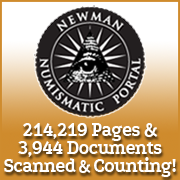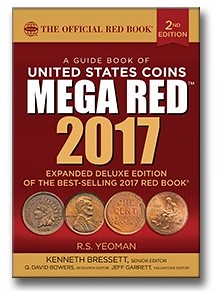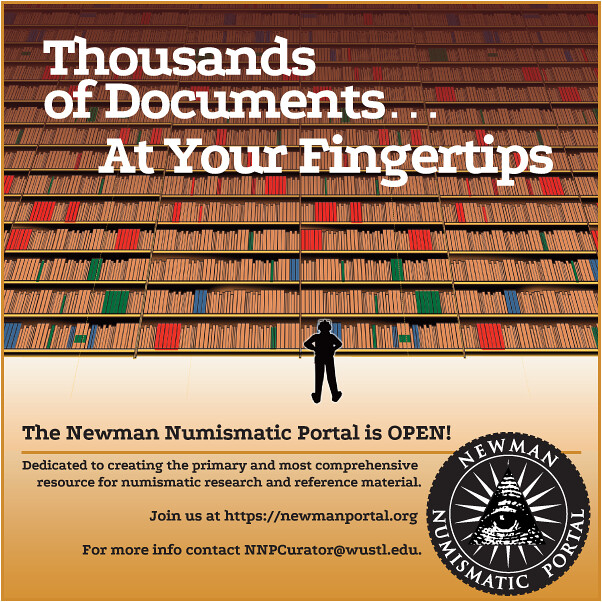
About UsThe Numismatic Bibliomania Society is a non-profit organization devoted to the study and enjoyment of numismatic literature. For more information please see our web site at coinbooks.org SubscriptionsThose wishing to become new E-Sylum subscribers (or wishing to Unsubscribe) can go to the following web page link MembershipThere is a membership application available on the web site Membership Application To join, print the application and return it with your check to the address printed on the application. Membership is only $20 to addresses in the U.S., $25 for First Class mail, and $30 elsewhere. For those without web access, write to: Terry White, Treasurer
AsylumFor Asylum mailing address changes and other membership questions, contact Terry at this email address: terrywhite5475@yahoo.com SubmissionsTo submit items for publication in The E-Sylum, just Reply to this message, or write to the Editor at this address: whomren@gmail.com BUY THE BOOK BEFORE THE COINSale Calendar |
- WAYNE'S WORDS: THE E-SYLUM APRIL 10, 2016
- KOLBE & FANNING ONLINE SALE CLOSES APRIL 16, 2016
- NEW BOOK: VIET NAM COINS & CURRENCY, 2ND EDITION
- NEW BOOK: THE CURSE OF BEAUTY
- BOOK REVIEW: AMERICAN GOLD AND SILVER
- BOOK REVIEW: VIRGINIA TOKENS, 2ND EDITION
- 2017 RED BOOK FIRST DAY OF ISSUE
- NEWMAN PORTAL SCANS B. MAX MEHL AUCTION CATALOGS
- 1867 MINT LETTER ORDERS GOLD AND SILVER INGOTS
- CHRISTIES TO SELL WATCH BY COINER HENRY VOIGT
- SCULPTOR-ENGRAVER VICKERS RETIRES FROM MINT
- APRIL FOOL, 2016
- NOTES FROM E-SYLUM READERS: APRIL 10, 2016
- MORE ON THE 2017 AMERICAN LIBERTY PORTRAIT
- REJOICING OVER 1903-O DOLLAR FIND
- BENJAMIN G. GREEN (1860-1914)
- MARBLING ON CONTINENTAL CURRENCY
- SELECTIONS FROM HERITAGE NEWMAN INTERNET PART 1 SALE
- NEW YORK TIMES CALLS NUMISMATICS BIG MONEY BUSINESS
- FRAMING THE LATE ANTIQUE AND EARLY MEDIEVAL ECONOMY
- CONFERENCE AT SPAIN'S NATIONAL ARCHEOLOGICAL MUSEUM
- WHY HAVE SO MANY RELICS BEEN FOUND IN ISRAEL LATELY?
- CHINESE VILLAGERS OVERRUN ARCHAEOLOGICAL SITE
- CHINESE COIN RECYCLER HOLDS OPEN HOUSE
- CANADIAN COMMUNION TOKEN COLLECTION OFFERED
- U.S. MARINE GERMAN SHEPHERD AWARDED DICKEN MEDAL
- MORE ON THE OTTOMAN COIN EMBOSSED POSTCARD
- ACTION URGED ON APOLLO 11 COMMEMORATIVE COINS
- STAMP MONEY OUT OF POLITICS OVERSTAMP
- OVERSTAMPS AS FREE SPEECH
- QUEER MONEY OVERSTAMP
- THE “LADY LAVERY” IRISH FREE STATE £50 BANKNOTE
- CAMBODIANS BURN U.S. DOLLAR "HELL MONEY"
- VIETNAM PLANS TO ISSUE COMMEMORATIVE BANKNOTE
- WOMEN USING BANKNOTES TO MEASURE THEIR SKINNINESS
- AUSTRALIA ISSUES “CONVICT LOVE TOKENS” COINS
- WHAT WILL WE DO (OR SAY) WITHOUT THE PENNY?
- GIANT COIN MAKES STUFF LOOK SMALL
Click here to access the complete archive
To comment or submit articles, reply to whomren@gmail.com
WAYNE'S WORDS: THE E-SYLUM APRIL 10, 2016
"Did that work? Hit the button again and see what happens..." Last week's issue was accidentally sent twice, so sorry if your inbox was seeing double.
New subscribers this week include: Doug Merenda, Scott Jackson, Kenny Sammut, and Papathanassiou K. Welcome aboard! We now have 1,964 subscribers.
This week we open with a sale reminder from Kolbe & Fanning, two new books, two reviews and a report on the 70th edition Redbook first day of issue.
Other topics this week include a curious 1867 U.S. Mint letter, a rare watch made by coiner Henry Voigt, marbling, uncut currency sheets, communion tokens, a new Dickin medal awardee, political overstamps, and what we'll do without the 'penny'.
To learn more about America's first supermodel, preventing Love Warts, B. Max Mehl's auction catalogs, Sculptor-Engraver Charles Vickers, Ben green's encased postage stamps, Apollo 11 commemoratives, Shimmer Floor Wax and wire transfers to the afterworld, read on. Have a great week, everyone!
Wayne Homren
Editor, The E-Sylum
KOLBE & FANNING ONLINE SALE CLOSES APRIL 16, 2016
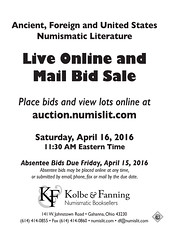 Kolbe & Fanning Numismatic Booksellers wish to remind their customers that their next online numismatic book auction will take place on
Saturday, April 16, beginning at 11:30 a.m., eastern time. The sale has been posted at auction.numislit.com, where bidders may register, browse the
sale’s contents and place absentee bids in advance.
Kolbe & Fanning Numismatic Booksellers wish to remind their customers that their next online numismatic book auction will take place on
Saturday, April 16, beginning at 11:30 a.m., eastern time. The sale has been posted at auction.numislit.com, where bidders may register, browse the
sale’s contents and place absentee bids in advance.
The April 16 auction is the latest in Kolbe & Fanning’s series of smaller online numismatic book auctions held by the firm in addition to their traditional printed-catalogue sales and public auctions. This sale includes a wide variety of material, covering ancient, medieval and modern foreign, and U.S. numismatics, and features 400 lots ranging in estimated value from $20 to $400. All lots are illustrated and feature the full descriptions collectors have come to expect from Kolbe & Fanning.
A few sale highlights include:
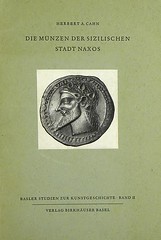 Cahn’s important work on the coinage of Naxos (lot 20)
Cahn’s important work on the coinage of Naxos (lot 20)
Perizonius’s 1713 work on the aes grave (lot 67)
The best edition (1843) of Riccio on the Roman family coins (lot 71)
Dannenberg’s indispensible work on medieval German coins (lot 115)
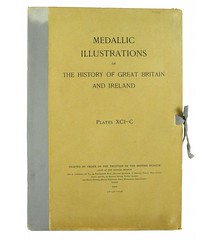 An original set of plates to Medallic Illustrations of the History of Great Britain and Ireland (lot 134)
An original set of plates to Medallic Illustrations of the History of Great Britain and Ireland (lot 134)
Barber’s 1841 The History and Antiquities of New England, New York, and New Jersey, including what may be the earliest depictions of the copper coins of New Jersey, Connecticut and Massachusetts (lot 234)
A fine copy of the ANA Centennial special edition Red Book (lot 395).
The online sale is available now for browsing and absentee bidding at auction.numislit.com. A PDF of the catalogue can be downloaded for the convenience of the reader through the firm’s regular website at www.numislit.com.
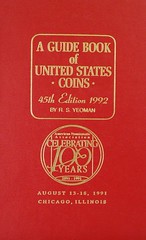 Although billed as an “online sale,” bidders may participate in the April 16 sale in a variety of ways: regular mail, email, phone, fax or
online bidding (live or absentee). Any absentee bids must be received by the day before the sale (Friday, April 15) in order to give us time to enter
them. Advance bids may be placed directly online at any time prior to the lot being sold. On Saturday, April 16, beginning at 11:30 a.m. eastern
time, the sale will be conducted as a live internet auction.
Although billed as an “online sale,” bidders may participate in the April 16 sale in a variety of ways: regular mail, email, phone, fax or
online bidding (live or absentee). Any absentee bids must be received by the day before the sale (Friday, April 15) in order to give us time to enter
them. Advance bids may be placed directly online at any time prior to the lot being sold. On Saturday, April 16, beginning at 11:30 a.m. eastern
time, the sale will be conducted as a live internet auction.
Customers who have participated online in any of Kolbe & Fanning’s sales will be familiar with the process. Others are encouraged to set up an iCollector account through auction.numislit.com and see for themselves how easy it is. Bidders wishing to participate in the live sale are strongly encouraged to register in advance.
Any questions may be directed to David Fanning at df@numislit.com or by phone at (614) 414-0855. We look forward to your participation.
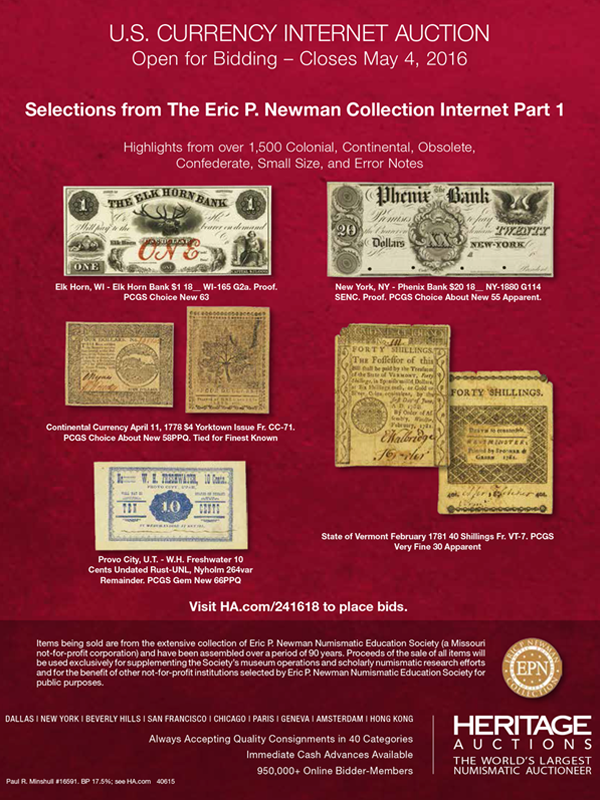
NEW BOOK: VIET NAM COINS & CURRENCY, 2ND EDITION
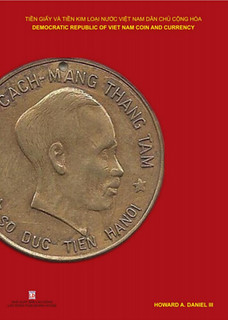 Democratic Republic of Viet Nam Coins and Currency (2nd Edition)
Democratic Republic of Viet Nam Coins and Currency (2nd Edition)
Author / Editor: Howard A. Daniel III
Binding: Paperback
Edition: 2nd
Publication Date: March 2015
Size: 7x10
Pages: 210
This updated catalog describes the known legal tender coins and paper money for "North" Viet Nam from February 3, 1946 to April 24, 1978. Besides legal tender pieces, there are many other financial instruments. There are over 450 pieces and over 200 overstamps and overprints listed. There are pieces in this catalog which have never been illustrated and/or cataloged in any other reference. Besides the detailed information about most of the pieces, there is also historical background information. All values are in US Dollars. There are still limited quantities of the first edition available for those interested in a copy for their libraries.
Author Howard Daniel adds:
The cover image is a medal produced for the opening of the Hanoi Mint in 1945. I found it in a junkbox in Hanoi sometime in the 1990's. So far, it is unique. I am receiving many emails from Vietnamese asking me if I would sell it and I have replied in the negative.
The usual time for approval of my books being printed in Viet Nam is about two months but this one took fourteen months! I have only information in it that was published or available in Viet Nam but I put in a detailed time line of decrees and other information that does not always make them look good, so they wanted me to change it. I rewrote several areas but did not delete anything. The third group of censors finally approved it.
My next catalog will be the third edition of French Southeast Asia Coins & Currency, which should be published early next year. It will have MANY corrections and additions not only to my previous editions but also to the major catalogs published in France. As I fix or add something, I do contact the French numismatists interested in it and let them know about it.
My major retailer is Wizard Coin Supply and they have been doing a great job in showing and describing my books on their website.
For more information, or to order, see:
Democratic Republic of Viet
Nam Coins and Currency (2nd Edition) (www.wizardcoinsupply.com/democratic-republic-of-viet-nam-coins-and-currency-2nd-edition.html)
NEW BOOK: THE CURSE OF BEAUTY
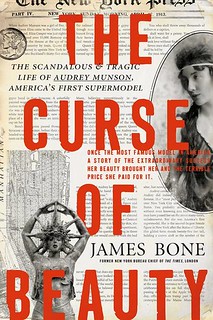 Audrey Munson was famous for posing naked and being cloaked in scandal.
Audrey Munson was famous for posing naked and being cloaked in scandal.
The Gilded Age model and silent-film star dated America’s richest bachelor, was the toast of the 1915 World’s Fair and inspired scores of painters and sculptors in the beaux-arts style. This proto-celebrity vanished long ago but her neoclassical features and figure live on in allegorical monuments and paintings across the United States.
In a new biography, “The Curse of Beauty,” journalist James Bone investigates the tragic muse who bared it all, attempted suicide and spent almost 65 years in an asylum. Audrey’s parents separated when she was 6, and her mother, Kittie, served as chaperone and constant companion during her career.
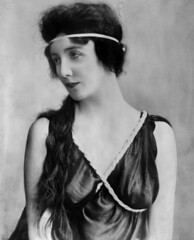 As a teen, Audrey was discovered by a photographer while window-shopping on Fifth Avenue. Her Aphrodite-like physique stood out among many
aspiring models. “She looked more like the Venus de Milo than any of the other girls,” Mr. Bone said, which spurred reporters to call her American
Venus.
As a teen, Audrey was discovered by a photographer while window-shopping on Fifth Avenue. Her Aphrodite-like physique stood out among many
aspiring models. “She looked more like the Venus de Milo than any of the other girls,” Mr. Bone said, which spurred reporters to call her American
Venus.
For a decade, Audrey posed for photographs, illustrations, paintings and murals, as well as monuments, memorials and sculpture. In New York City, she is the unsung equivalent of France’s national symbol, Marianne. Audrey towers above the fountain by the Plaza Hotel and is immortalized in the sculptures “Descending Night,” by Adolph Alexander Weinman, and “Memory,” by Daniel Chester French, at the Metropolitan Museum of Art. She holds up a crown in “Civic Fame,” an allegorical female figure that stands 25 feet tall on the Manhattan Municipal Building, surpassed in size as a female figure in the city only by the Statue of Liberty.
At the height of her celebrity, the former chorus girl dominated the World’s Fair in San Francisco. Then 24, she modeled for roughly three-quarters of the sculptures in the fair’s Jewel City exhibit.
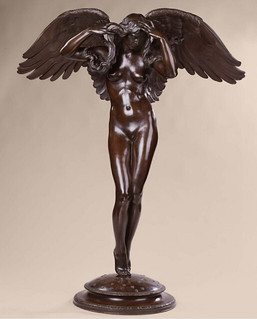
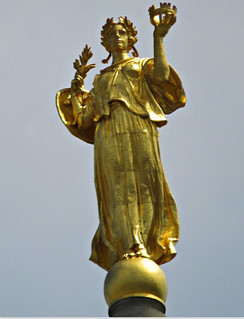
Munson modeled for "Descending Night" and "Civic Fame",
both by artist Adolph Alexander Weinman
To read the complete article, see:
The Rise and Fall of Audrey Munson,
the ‘American Venus’ (www.wsj.com/articles/the-rise-and-fall-of-audrey-munson-the-american-venus-1459957249)
She was known as “the most perfect model,” and in her heyday, one headline proclaimed, “All New York Bows to the Real Miss Manhattan.” She earned the name not just because she was the toast of the town in the 1910s, but because her perfectly proportioned face and body inspired numerous works of sculpture that still stand in Manhattan, Brooklyn and The Bronx today.
One contemporary account concluded that Audrey Munson “posed for more public works than anyone” — at least a dozen of which are still on public display. New Yorkers may not know it, but they see Munson everywhere.
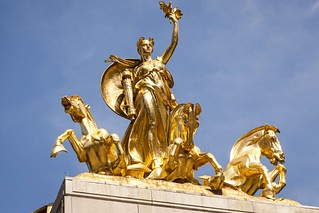 Her face and body were the basis for “Civic Fame,” the statue that stands atop the Municipal Building at 1 Centre St., as well as the
figure of Columbia adorning the USS Maine National Monument in Columbus Circle and the “Spirit of Commerce” angel at the northern base of the
Manhattan Bridge.
Her face and body were the basis for “Civic Fame,” the statue that stands atop the Municipal Building at 1 Centre St., as well as the
figure of Columbia adorning the USS Maine National Monument in Columbus Circle and the “Spirit of Commerce” angel at the northern base of the
Manhattan Bridge.
That’s her likeness lounging above the front door of the Frick and coyly tucked in a niche outside the New York Public Library’s main branch. She is the face of Pomona, the Roman goddess of abundance, on the Pulitzer Fountain at 59th Street and Fifth Avenue, across from the Plaza Hotel.
“She was the first supermodel — and the first model to have a standing in society,” says Diane Rozas, co-author of “American Venus: The Extraordinary Life of Audrey Munson, Model and Muse.”
To read the complete article, see:
NYC’s first supermodel died alone in an insane
asylum (http://nypost.com/2016/03/05/nycs-first-supermodel-died-alone-in-an-insane-asylum/)
So why include this in The E-Sylum? Two reasons: First, it gives us a chance to discuss the attribution of Munson as a coin model; second, the new book sounds like a good read for serious numismatists regardless. Artists often use multiple models in their work, amalgamating features from each, so it may well be that Munson sat for Weinman at some point while he was working on his coin design. The book sounds like a great view into the art world of the Gilded Age when many of our greatest coin designers were active, including Weinman, Brenner and St. Gaudens. -Editor
Roger Burdette adds:
Add this nonsense to the bogus claimants for the "Indian" head cent, Morgan dollar, Standing Liberty quarter, Buffalo nickel obverse, Saint-Gaudens double eagle, and others.
One can legitimately state that Adurey Munson modeled for Adolph Weinman at sometime or another. This is noted in his archival papers. Some of her body parts might be incorporated in his statue “Descending Night,” but the statue is not a likeness of Munson. Being an artist's model does not mean the model's likeness is on a completed work of art. Most art images are composites and only individual portraits - usually made on commission by the subject - are likenesses. Munson was among the bits and pieces from multiple models and ideas that resulted in the final artistic product.
The "Mercury" dime is not a portrait of Elsie Stevens, but comparison of Weinman's portrait bust of her - which is an individual likeness - and the final coin design reveals many areas of agreement between the coin and the portrait. The artists' papers confirm her status as the primary source of the Liberty image.
To read the complete article, see:
NYC’s first supermodel died alone in an insane
asylum (http://nypost.com/2016/03/05/nycs-first-supermodel-died-alone-in-an-insane-asylum/)
To read the earlier E-Sylum article, see:
WAYNE'S NUMISMATIC DIARY: NOVEMBER 10, 2013
(www.coinbooks.org/esylum_v16n46a19.html)

BOOK REVIEW: AMERICAN GOLD AND SILVER
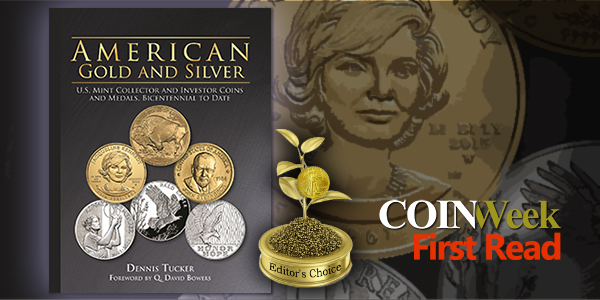
As modern U.S. coins grew in popularity and became an important segment of the coin market over the last several decades, there was no real concomitant emergence of a significant numismatic literature about this burgeoning field.
There are a few key works, like Eric Jordan’s Modern Commemorative Coins (2010), and the short volume he coauthored with John Maben, Top 50 Most Popular Modern Coins – as well as books on specific series from Whitman’s Official Red Book series of Guide Books.
But collectors of modern U.S. coins, especially those who focus on the major gold and silver bullion and collector coins issued by the United States Mint in recent decades, have tended to rely almost exclusively on numismatic periodicals and web sites and have not had much in the way of reference books to help make them more educated collectors.
In 2012 that began to change with the publication of John Mercanti and Miles Standish’s American Silver Eagles: A Guide to the U.S. Bullion Coin Program, by Whitman Publishing, best known as the company that created the “Red Book”. The third edition of American Silver Eagles was released last week on March 17.
The second volume in Whitman’s bullion coin series is Edmund Moy’s 2014 book, American Gold and Platinum Eagles: A Guide to the U.S. Bullion Coin Programs, which, like the Mercanti and Standish volume, provides a detailed overview of the subject at hand, with useful background on how the series came about and detailed reference information on each coin.
Dennis Tucker, Whitman’s publisher and an award-winning author, has now completed the trio with the publication of his book, American Gold and Silver: U.S. Mint Collector and Investor Coins and Medals, Bicentennial to Date.
Tucker’s book is a tour de force, covering U.S. coins and medals issued since 1976 apart from American Eagles (though a brief chapter summarizing those programs is included). He began working on the book in 2009, as the author explained in personal correspondence to me, though most of the research and writing was done over the two years preceding its release.
The author visited every current U.S. Mint facility in operation plus two that are no longer functioning (New Orleans and Dahlonega), and interviewed numerous experts on modern U.S. coins*. He worked closely with numerous staff from the U.S. Mint, especially its sculptor-engravers and medallic sculptors, for whom the author clearly has a lot of admiration and respect.
After providing the reader with a fascinating overview of the role of gold and silver in human and U.S. history, he moves on to detailed, systematic, and gorgeously illustrated chapters about the most important modern gold and silver coin series, especially the American Buffalo Gold, First Spouse Gold, America the Beautiful Silver, and other special modern coin series – as well as on what he sees as the most important medals issued since the bicentennial.
To read the complete article, see:
Coin
Books – First Read: American Gold and Silver by Dennis Tucker
(www.coinweek.com/education/numismatic-books/first-read/coin-books-first-read-american-gold-silver-dennis-tucker/)
BOOK REVIEW: VIRGINIA TOKENS, 2ND EDITION
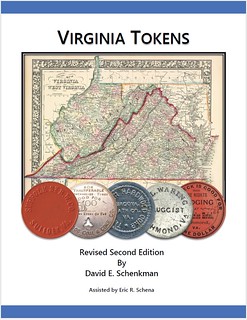 Virginia Tokens – revised Second Edition
Virginia Tokens – revised Second Edition
by David E. Schenkman, Assisted by Eric R. Schena
Review by Wayne K. Homren
Two is better than one. As important and useful as David Schenkman’s 1980 first edition of Virginia Tokens was, the new Revised Second Edition published in 2015 is even better by a country mile. So much has changed since 1980 – not only are far more specimens of Virginia tokens known and documented (with double the number of listings), but publishing technology has also advanced greatly, and the new edition features far more illustrations with most in full color. The book is a delight for any exonumist and a must-have for both new and advanced collectors of its subject matter.
Two heads are better than one as well, and the addition of Eric Schena to the project took the effort to a new level. As an advanced collector and researcher of Virginia tokens in his own right, he brought complimentary skills and expertise to the table, serving both as contributor to and designer of the Revised edition. The majority of the 6,000 different tokens from roughly 2,250 different merchants in approximately 770 towns are in the collections of the authors.
All of the modern images of the issuing storefronts were taken by Eric, who has made pilgrimages around the state to visit some of the sites. There's no substitute for shoeleather in numismatic research, and his efforts are apparent; many entries include new information obtained directly from the original token issuers, their families or neighbors. This first-hand research is nearly impossible to duplicate, and will stand the test of time.
 Tokens in Virginia have a long and distinguished history and cover a wide spectrum of specialties including Hard Times store cards,
transportation tokens, coal scrip, trade tokens and picker’s checks, Virginia Tokens documents the many varied aspects of Virginia tokens in a
convenient and easy to use format. The layout is clean and simple, with ample white space making the pages easy on the eyes (and easy for writing
notes and annotations).
Tokens in Virginia have a long and distinguished history and cover a wide spectrum of specialties including Hard Times store cards,
transportation tokens, coal scrip, trade tokens and picker’s checks, Virginia Tokens documents the many varied aspects of Virginia tokens in a
convenient and easy to use format. The layout is clean and simple, with ample white space making the pages easy on the eyes (and easy for writing
notes and annotations).
The revised second edition includes an expanded introduction that features a history of tokens in Virginia, as well as details on several of the principal token manufacturers. In addition, tips on collecting will benefit both long-time specialists as well as novices to the field. Rounding out the book is a comprehensive index of merchants that will help collectors to quickly identify mavericks.
I personally enjoyed the illustrations of ultra-rare cardboard scrip and unusual old-timey tokens such as H15-10 from the Hughes Buggy Co. of Lynchburg, VA: “This Charm If Carried In The Pocket Prevents Bald Heads, Hard Work, Love Warts On The Nose, Bicycle Face, War Craze Swelled Heads, Insanity, Unhappy Marriages, Dark Brown Taste, Delirium Tremens And Punctured Tires.”
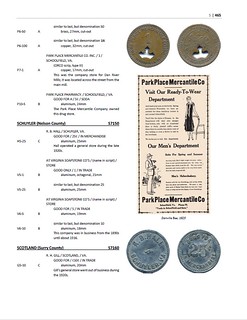 The state of Virginia is a perfect match for a project of this sort – it’s not too big, and not too small. A smaller western state might
not have enough tokens to fill a book on its own; a larger northern state might require multiple phone-book size listings. Virginia seems “just
right”. Every library in the state should acquire a copy – there’s something in here of interest to anyone who’s ever lived in or set foot in a
Virginia town. As a transplanted Yankee living in the north of the state, the book is a great reminder that I’m south of the Mason-Dixon line and a
resident of a largely rural state.
The state of Virginia is a perfect match for a project of this sort – it’s not too big, and not too small. A smaller western state might
not have enough tokens to fill a book on its own; a larger northern state might require multiple phone-book size listings. Virginia seems “just
right”. Every library in the state should acquire a copy – there’s something in here of interest to anyone who’s ever lived in or set foot in a
Virginia town. As a transplanted Yankee living in the north of the state, the book is a great reminder that I’m south of the Mason-Dixon line and a
resident of a largely rural state.
In addition to Virginia Tokens, David E. Schenkman has authored seven other token catalogs including Merchant Tokens of Washington, D.C., Maryland Merchant Tokens, and in 2009 West Virginia Merchant Tokens, all of which have become standard works. Schenkman has been a prolific writer throughout his numismatic career, serving as editor of the Token and Medal Society’s TAMS Journal from 1982 to 2010, a task that included editing all the books published by that organization during that time. The second edition of Virginia Tokens continues in this fine tradition of ground-breaking research and will no doubt become an influential work on merchant tokens for years to come.
Originally from North Carolina, Eric Schena has called the Washington, DC area home for more than thirty years. Eric was mentored by Alexandria, Virginia coin dealer Gene Brandenburg who introduced him to the wonders of local tokens and currency and later on introduced him to David Schenkman. In 2012, he published his first book, The Ingle System Scrip of the Mid-Atlantic Region, and has since authored several articles on various local numismatic subjects, ranging from the scrip from a Western Maryland coal town to Antebellum banking in Virginia. He is also a current member of the Token and Medal Society’s Board of Directors and is a recipient of the 2013 Cliff Mischler Cataloging Medal and the 2015 Gold Schenkman Literary Award. In his numismatic career, Eric currently works as a cataloger for Stack's Bowers Galleries, a job that provides him the opportunity to delve deeper into the history of some of the great American coin rarities.
The book is priced at $75 with a discount for VNA members. For more information or to order, contact the Virginia Numismatic Association or visit VNA’s website at www.vnaonline.org.
THE BOOK BAZARRE
2017 RED BOOK FIRST DAY OF ISSUE
Dave Bowers writes:
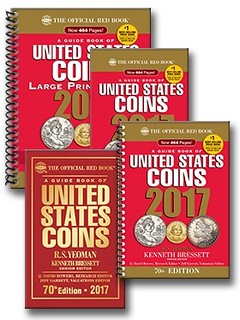 At the recent Whitman Expo in Baltimore the first day of issue of the 2017 Guide Book of U.S. Coins took place on Thursday, March
31. This is the 70th anniversary edition.
At the recent Whitman Expo in Baltimore the first day of issue of the 2017 Guide Book of U.S. Coins took place on Thursday, March
31. This is the 70th anniversary edition.
Forty-eight copies had been signed in advance by editor Ken Bressett, and later by valuations editor Jeff Garrett and by me as research editor. I numbered the copies from 1 to 48 and inked in “First Day of Issue, March 31, 2016.”
At 2 p.m. on Thursday, Friday, and Saturday drawings were held in which convention attendees who filled out tickets were awarded, 10 each day, to numbers drawn at random. Some numbers were set aside by Dawn Burbank, who with Michelle Hudson manned the Whitman display, No. 1 to be sent to Charles Anderson who was instrumental in the Whitman acquisition years ago. Others will be sent by Dawn to Jeff Garrett, Ken Bressett, and some other Whitmanites.
At the drawing on Thursday the 31st I cautioned each of the 10 winners to be careful with their free copies as, who knows?, they might become valuable collectibles!
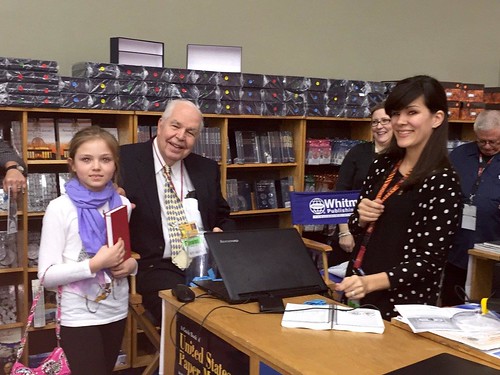
A young reader gets her copy!
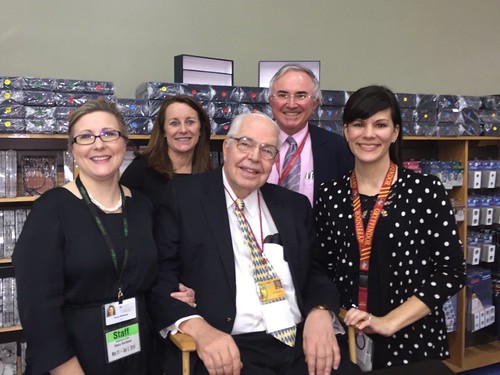
Back row: Mary Burleson, David Sundman
Front: Michelle Hudson, Dave Bowers, Dawn Burbank
Mega Red arrived Thursday this week. I kept saying “Wow” for fifteen minutes as I leafed from section to section. Coin collectors: By studying this book you can become a numismatist!
For more information, or to order, see:
A guide book of United States coins.
(www.whitman.com/store/Inventory/Browse/Whitman-Books)
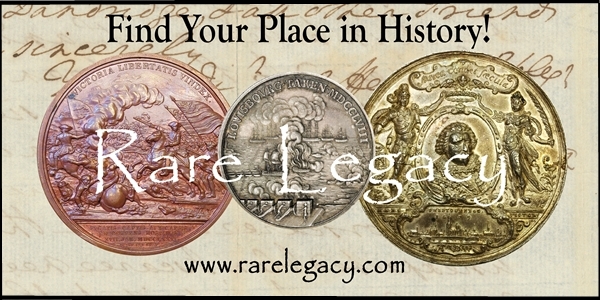
NEWMAN PORTAL SCANS B. MAX MEHL AUCTION CATALOGS

 B. Max Mehl was one of the most important catalogers of the first half of the 20th century, with 116 numbered sales listed in Adams and
Gengerke. The Newman Portal has digitized the entire set and these catalogs are now available online. Although considered more businessman than
scholar, Mehl consistently attracted strong consignments and these catalogs rightfully belong in a core library of American numismatic literature.
Adams rated 29 of these sales, fully a quarter of the set, at the A- level or higher. The Newman Portal acknowledges a generous collector for loaning
this series for scanning, which was performed in St. Louis at Washington University.
B. Max Mehl was one of the most important catalogers of the first half of the 20th century, with 116 numbered sales listed in Adams and
Gengerke. The Newman Portal has digitized the entire set and these catalogs are now available online. Although considered more businessman than
scholar, Mehl consistently attracted strong consignments and these catalogs rightfully belong in a core library of American numismatic literature.
Adams rated 29 of these sales, fully a quarter of the set, at the A- level or higher. The Newman Portal acknowledges a generous collector for loaning
this series for scanning, which was performed in St. Louis at Washington University.
To view the B. Max mehl catalogs on NNP, see:
https://nnp.wustl.edu/library/auctioncompanydetail/5
1867 MINT LETTER ORDERS GOLD AND SILVER INGOTS
Bob Julian writes:
The attached 1867 letter was found in the Mint archives. Under normal circumstances the engraver was given written instructions to strike medals for private institutions or for sale by the Mint. The order for a gold half eagle ingot and silver quarter dollar ingot is special but the meaning is not known; the purpose cannot be for proof coins as these were done by the chief coiner, A. Loudon Snowden. It is possible that there were special test runs in the engraver’s department for these two denominations but available pattern references do not show anything that might apply.
Longacre’s name is misspelled, which only adds to the interest of this letter.
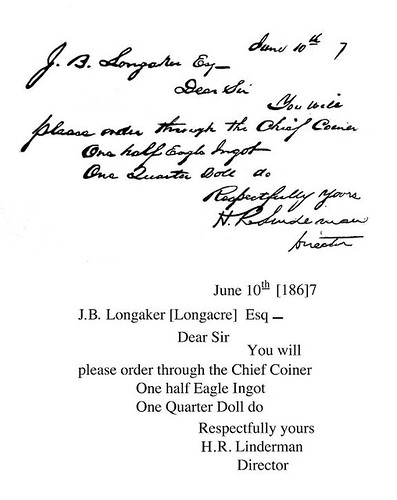
CHRISTIES TO SELL WATCH BY COINER HENRY VOIGT
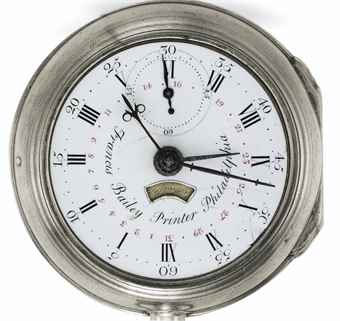 YANKEE INGENUITY AND DESIGN: THE EARLIEST KNOWN WATCH MADE ENTIRELY ON AMERICAN SOIL
YANKEE INGENUITY AND DESIGN: THE EARLIEST KNOWN WATCH MADE ENTIRELY ON AMERICAN SOIL
Rarely in the world today does an object surface that redefines scholarship in an entire field. Such is the case with the discovery of the Henry Voight-Francis Bailey pocket watch. The presently offered watch was made by Henry Voight, chosen later by George Washington as chief coiner of the first US Mint and especially made for the first printer of the Articles of Confederation, Francis Bailey.
As impressive as the unparalleled technical merits of this unique watch, no less impressive are the life and times of the man by whom it was originally ordered. They bear witness to the age of the founding fathers. This watch literally rewrites the history of American horology and touches upon every element of the birth of a nation.
The heart of this incredible story connects us directly to masterful figures of early American history. However, perhaps even more prominent is its powerful representation of the American ingenuity to solve problems - whether political, scientific, or horological - in a creative, original, and bold way
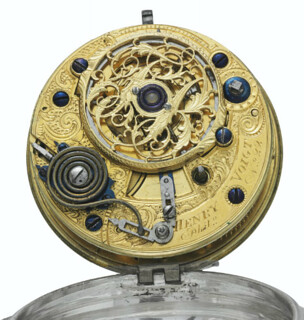 Technical Importance of the Voight Watch
Technical Importance of the Voight Watch
From a horological point of view, this watch reveals Voight’s genius in solving and improving watchmaking challenges of the era and
innovating in a field in which the most revered masters had been practicing their arts for centuries. Protected within a seemingly simple
silver case, the watch reveals exceptional surprises in almost every element of its design, from its case with a unique opening system, the
novel form of temperature compensation, prototypical Voight-type double virgule escapement, and elaborately engraved balance cock with the
pierced initials of its owner. Every element of this watch amazes and informs the modern researcher. The synthesis of these elements
evidences and shows the mind of a genius at work and is the quintessence of proverbial Yankee ingenuity.
Henry Voight
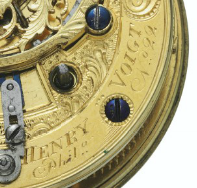 Henry Voight (1738–1814) was an early American polymath, who in addition to being an accomplished coinmaker and appointed by President
Washington Chief Coiner of the U.S. Mint also had a thriving clock and watchmaking business and was a mathematical instrument maker, machine and
steam engine builder. He is recorded at “Second-street nearly opposite the Buck-Tavern above Race-street…making all sorts of new watches, upon all
the principles which they can be made on in Europe, .”; he repaired clocks and watches for Thomas Jefferson and knew him well; he invented (with
John Fitch) a new kind of steamboat which achieved then unheard of speeds of 6 to 8 miles per hour. John Fitch wrote of him:
Henry Voight (1738–1814) was an early American polymath, who in addition to being an accomplished coinmaker and appointed by President
Washington Chief Coiner of the U.S. Mint also had a thriving clock and watchmaking business and was a mathematical instrument maker, machine and
steam engine builder. He is recorded at “Second-street nearly opposite the Buck-Tavern above Race-street…making all sorts of new watches, upon all
the principles which they can be made on in Europe, .”; he repaired clocks and watches for Thomas Jefferson and knew him well; he invented (with
John Fitch) a new kind of steamboat which achieved then unheard of speeds of 6 to 8 miles per hour. John Fitch wrote of him:
"Mr Voight is a Plain Dutchman who fears no man and will always speak his sentiments which has given offense to some of the Members of our Co., and some of them have effected to have a contemptible an opinion of his Philosophic abilities. It is true he is not a man of Letters nor mathematical Knowledge but for my own part I would depend on him more than a Franklin, a [David] Rittenhouse, an Ellicot, a [John] Nancarrow, and Matlack [Timothy Matlock], all combined, as he is a man of superior Mechanical abilities, and Very considerable Natural Philosophy; and as we have many of the first Geniuses in our Co., perhaps nearly equal to those I have mentioned, it is Certain that he has pointed out more defects than them all, and pointed out ways to remedy those defects, when consternation sat silent in every breast for the disaster."
Francis Bailey
Francis Bailey (1744-1817) was born in Lancaster County, Pennsylvania, and set up his first print shop in the town of Lancaster, moving the
business to Philadelphia in 1778. A prominent member of the community and churchman, he was appointed official printer of the state of
Pennsylvania and a deacon of the Presbyterian Church, later becoming an influential Swedenborgian. Deeply involved in the American cause,
Bailey was the first to call George Washington “the father of his country” in print and was an early printer of the Articles of
Confederation, precursor to the U.S. Constitution. In 1776, while still in Lancaster, he printed an early edition of Thomas Paine’s
Common Sense; in 1778 he published (with Hugh Henry Brackenridge) the United States Magazine, and in 1781 he became editor of
the Freeman’s Journal or the North American Intelligencer. Another exemplar of American ingenuity, Bailey invented a printing
process designed to thwart forgery, a serious concern at the time.
This lot description spells his name as "Voight", but most (though not all) references in numismatic literature spell it "Voigt". I've been guilty of using both variations at different times in The E-Sylum. The name is spelled "Voigt" in the watch, which was presumably engraved by Henry himself. So I went with "Voigt" for the headline and comments of this article (but left the Christie's text as-is).
-Editor
To read the complete lot description (be sure to click on Lot Notes), see:
THE HENRY VOIGHT-FRANCIS BAILEY AMERICAN CALENDAR
WATCH (www.christies.com/lotfinder/lot_details.aspx?intObjectID=5985098) 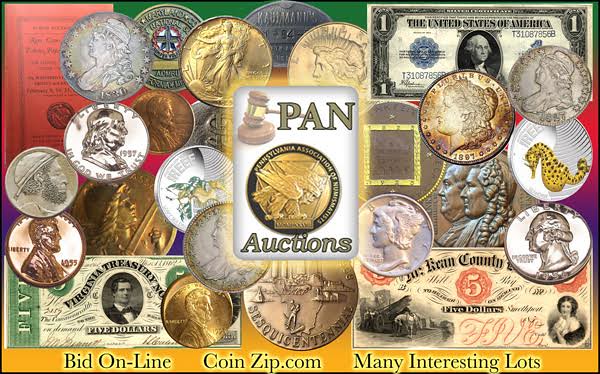
SCULPTOR-ENGRAVER VICKERS RETIRES FROM MINT
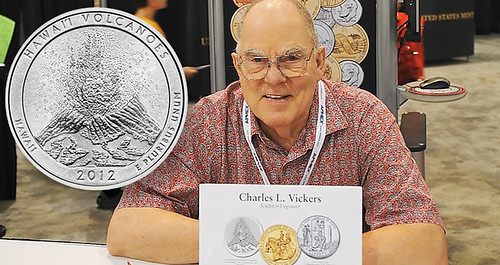
U.S. Mint Sculptor-Engraver Charles L. Vickers retired from the engraving staff of the nation's coin producer effective March 31.
Vickers joined the Mint's engraving staff based at the Philadelphia Mint on Dec. 29, 2003, at the age of 66.
The U.S. Mint plans to advertise for a replacement to fill the vacancy Vickers' retirement creates.
A Texas native, Vickers served in the U.S. Army as a member of the 101st Airborne Division. Following his military service, Vickers went to New York City where he studied at the Art Students League and Frank Reilly School of Art, also attending the Pratt Institute and the School of Visual Arts.
In 1976, Vickers relocated to Pennsylvania to join the private Franklin Mint. Since leaving as a senior sculptor in 1985 and establishing his own studio, Vickers’ design work has earned him recognition throughout the world, including commissioned work for private collections.
According to his U.S. Mint biographical information, among Vickers' private sculpturing credits are the official medal of the Ronald Reagan Library, the Four Pillars of Freedom set in the Ronald Reagan Library, the official christening medal of the USS Ronald Reagan, the official U.S.S. Ronald Reagan Captain’s Medal, the Pope John Paul II 25th Anniversary medal and the 2001 George W. Bush official inaugural medal (design and sculpt).
During his tenure at the Mint, Vickers created his medals, coins and designs in bas-relief.
To read the complete article, see:
U.S. Mint
Sculptor-Engraver Charles L. Vickers retires from engraving staff
(www.coinworld.com/news/us-coins/2016/04/charles-vicker-retires-from-mint-engraving-staff.all.html)
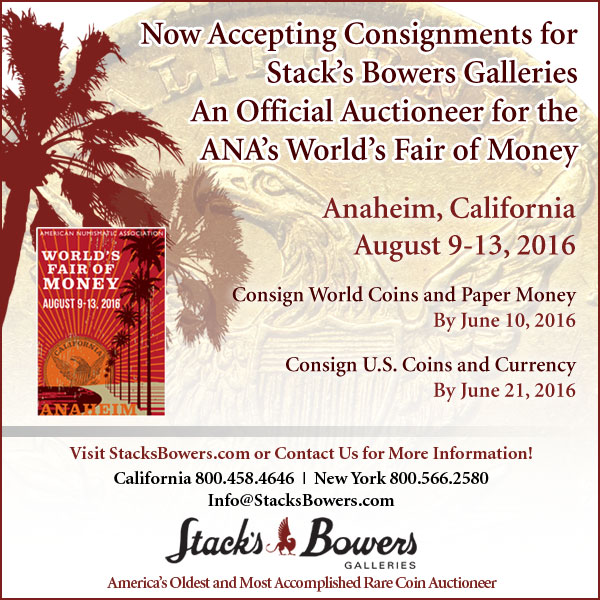
APRIL FOOL, 2016
ANS To Clean Large Cent Collection
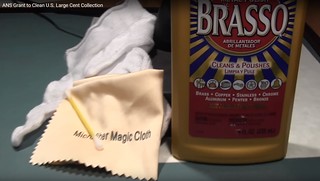
Ray Williams writes:
I posted it to the Early American Coppers chat group - Copper Notes - just to see if there was any reaction. The guys were going nuts until one of them called the ANS and discovered it to be an April Fool's joke. I was taking the blog seriously too until I reached the part about using Brasso to clean the coins.
Brasso is what I used in the Army to clean my brass... then I knew it was a joke. I called Catherine at ANS to thank her for all the laughs. She told me that Alan Roche (ANS Photographer) was behind it. He's the voice on the video showing how to use Brasso on copper coins.
Life is too short no to laugh often and laugh loud - I did both
One E-Sylum reader wrote:
I read in horror and shock about the ANS project to clean their Large Cent collection. I hope this is some sick joke. I hope this is just an April Fools joke. To paraphrase, "Say it ain't so".
Another E-Sylum reader wrote:
I was mildly amused/outraged to read that the ANS has received a prestigious grant and already purchased gallons of Brasso in order to clean its US large cent collection. Is this some kind of April Fool's joke? Watching the video demonstration, I noted that no attempt whatever was made to rinse the coins after treatment. Has anyone considered that residues of Brasso left on the recessed areas of the coin could corrode the surfaces into oblivion?
Brasso worked on the buttons of my military uniform when I was in ROTC, but I wouldn't dare use it on my coins.
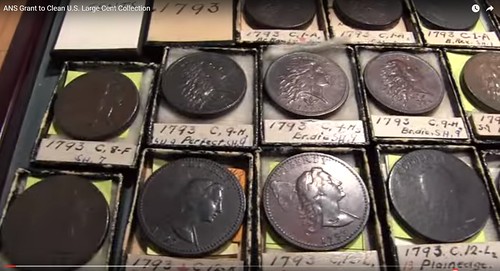
David Sundman writes:
As it was sent April 3rd, and I thought I had escaped April 1st Tomfoolery completely unscathed, it took me a little bit to catch this ANS Grant to Clean U.S. Large Cent Collection zinger you included in the last E-Sylum. Think of the orders for Brasso that stimulated from collectors everywhere !
Pete Smith writes:
The collection is well known among EAC members and copper collectors. When I got to the part about Brasso, I looked back to see that the post was dated back to Friday.
I can't remember the specifics of this story - there was an historical society that had some silver medals on display, possibly Indian Peace medals. The staff would periodically polish them with silver polish because the public liked to see shiny medals.
Won't those dirty large cents at the ANS look much better when they are bright and shiny?
Ken Spindler writes:
Thanks for the tip on the brasso! I just shined up my collection of rare French Revolution tokens!
It's a dessert topping! No, it's a floor polish! Actually, it's BOTH! (from Saturday Night Live, for those who don't recognize it.)
For grins, here's a link to the 1976 SNL skit on Hulu: Saturday Night Live Shimmer Floor Wax (http://www.hulu.com/watch/264564)
To read the complete article, see:
ANS RECEIVES GRANT TO CLEAN U.S. LARGE CENT COLLECTION
(www.anspocketchange.org/grant-to-clean-large-cents/)
The Armchair Guide to Coins
Dick Johnson writes:
Thank you David Pickup for your sense of humor. I am still laughing days later. You Putdown good humor..
To read the earlier E-Sylum articles, see:
ANS RECEIVES GRANT TO CLEAN U.S. LARGE CENT COLLECTION
(www.coinbooks.org/esylum_v19n14a10.html)
NEW BOOK: THE ARMCHAIR GUIDE TO COINS
(www.coinbooks.org/esylum_v19n14a05.html)
Fashionable Bibliophiles
George writes:
The link should have taken you to a depiction of a handbag crafted to resemble the binding of an early book. Nothing wrong with the fashion show though.
To read the earlier E-Sylum article, see:
NOTES FROM E-SYLUM READERS: APRIL 3, 2016 : Fashionable Bibliophiles
(www.coinbooks.org/esylum_v19n14a12.html)

NOTES FROM E-SYLUM READERS: APRIL 10, 2016
Thanks to Asylum Editors
Regarding the editorship change at our print publication The Asylum, Sandy Pearl writes:
Congratulations to David Yoon on editing and making The Asylum as educational, interesting, and enjoyable as any published work I have had the pleasure of reading. Congratulations to Maria Fanning on assuming The Asylum responsibilities for the future. I’m sure you will do fantastic. Thanks.
To read the earlier E-Sylum articles, see:
ASYLUM EDITOR DAVID YOON MOVES ON (www.coinbooks.org/esylum_v19n14a02.html)
MARIA FANNING ASSUMES ASYLUM EDITORSHIP
(www.coinbooks.org/esylum_v19n14a03.html)
More on Tom Elder
Dave Hirt writes:
I have some comments on the post on Tom Elder, which I very much enjoyed reading. He was a crusty person. Perhaps much like Edward Cogan, about whom a token was struck that read, " A FOINE OULD BROOKLYN GITLEMAN OF A PEPPERY TURN OF MOIND, HE GITS HIS EBENAZUR UP AND THIN HE GOES IT BLOIND".
It is stated that he died a "sick and cynical old man". I am sure that it is hard to be happy and positive when your health is ebbing away, however he kept writing his monthly column "Recollections of an old collector" in Hobbies Magazine until the end of his life. I have the 1948 May and June issues of Hobbies in my library, and his column is in both of them. The June column is especially interesting. Also in that issue was the sad announcement of Mr Elder's death.
To read the earlier E-Sylum article, see:
THOMAS LINDSAY ELDER (1874-1948) (www.coinbooks.org/esylum_v19n14a08.html)
Steve Tanenbaum's Killer
Alan V. Weinberg writes:
Regarding Pete Smith's observation on "Killing Spree" and the death of Steve Tanenbaum: Approx 2 years ago I too turned on the TV on a cable channel and immediately viewed Steve's image filling the screen in color. WTF? It was a cable show "The Killer Speaks" which is an episodic one hour show of closeup in-your-face interviews of imprisoned vicious killers.
In this case, it was Ukranian immigrant Maxim Gelman who killed four people, mostly using a knife, in a two day violent crime spree in Brooklyn and Manhattan. He was clearly insane (but not legally so) on the screen and showed no remorse. The kind of person you never want paroled. Steve Tanenbaum was the only Gelman victim to be killed "accidentally" as Gelman was fleeing an assault in a carjacked stolen vehicle and ran over him in a crosswalk in broad daylight as he was returning from his local bank.
To read the earlier E-Sylum article, see:
NOTES FROM E-SYLUM READERS: APRIL 3, 2016 : Remembering Steve Tanenbaum
(www.coinbooks.org/esylum_v19n14a12.html)
Michigan Coin and Stamp Company Information Sought
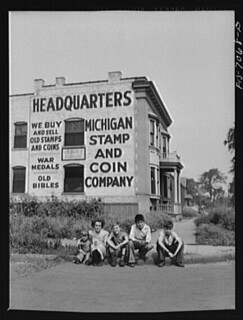 Jeff Starck of Coin World writes:
Jeff Starck of Coin World writes:
While poking around the Library of Congress Prints and Photographs website for Coin World’s This Day in History series I found this image of the Michigan Coin and Stamp Company.
Surely E-Sylum readers would love to see this, and probably know more about the company background.
To read the complete Library of Congress entry, see:
https://www.loc.gov/item/owi2001009308/PP/
1950s-Era ANA Convention Bars Available
Bob Rhue writes:
I have a small string of ANA Convention bars consisting of the top bar with "ANA," followed by bars for the following ANA Conventions: 1949, 1950, 1951, 1954, 1955, 1956, 1957, 1958, 1959. If anyone has a use for these I'm happy to mail them to them at no charge. Although I have forty ANA convention bars on my own little 'string', my first convention doesn't go back this far.

MORE ON THE 2017 AMERICAN LIBERTY PORTRAIT
Regarding the 2017 American Liberty silver medal and gold coin design chosen by the CCAC, Larry Gaye writes:
 I was gobsmacked when I saw the image in the newspaper. I thought is was an utterly beautiful portrait of a strong woman and a brilliant
representation of the concept of Liberty. I guess I'm in the ranks of the "wrongheaded."
I was gobsmacked when I saw the image in the newspaper. I thought is was an utterly beautiful portrait of a strong woman and a brilliant
representation of the concept of Liberty. I guess I'm in the ranks of the "wrongheaded."
Coin design has always been a conservative application of art. I'm using the word conservative not in a political sense but the true definition of the word as defined in Webster's New World College Dictionary, Fourth Edition, 2010: 2: "tending to preserve establish traditions of institutions and to resist or oppose any changes in these, politicians, art." This is certainly an application on the art side.
Michael Marotta writes:
I like the girl. The big stars are a bit much.
If you look at American money, not every Miss Liberty was an Athena with a Native American war bonnet. We have had real Native Americans and African Americans on our monetary media. The Marian Anderson gold coins of the Fine Arts Commission are an example, often overlooked by those who are ignorant about American numismatics. The Sacagawea dollar, which became a four-coin set of Native American themes, apparently was non-controversial. If you want controversy, show someone a Peace dollar, and then tell them about the scathing denunciations of the coin, even from the designer himself.
Miss Liberty of 2017 may be the last of her type. This National Geographic photoessay from photographer Martin Schoeller displays 25 "average" Americans.
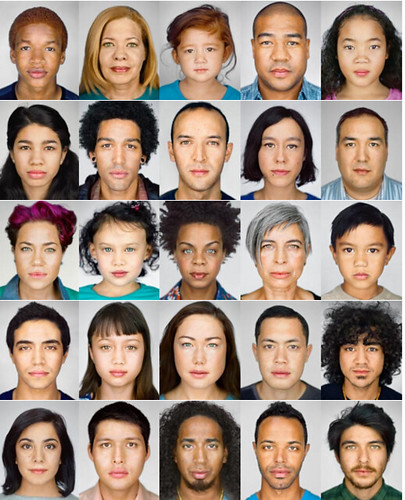
To see the original National Geographic collage, see:
The Changing Face of America
(http://ngm.nationalgeographic.com/2013/10/changing-faces/schoeller-photography)
To read the earlier E-Sylum article, see:
LIBERTY PORTRAIT RECOMMENDATION DRAWS CRITICISM
(www.coinbooks.org/esylum_v19n14a19.html)
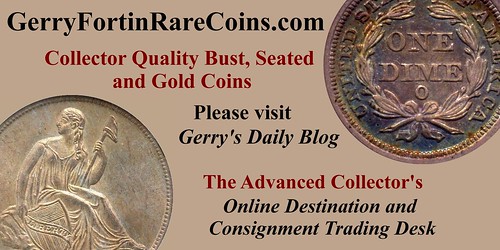
REJOICING OVER 1903-O DOLLAR FIND
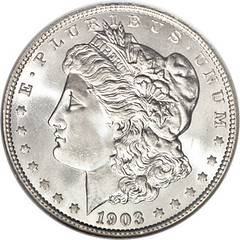
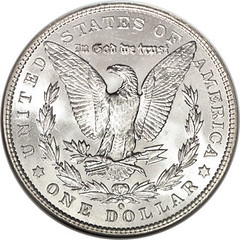
I was twelve years old when the release of the 03 O's occurred. My dad brought a bunch of silver dollars home for me to look at from our family owned gas station. I got out my trusty blue Whitman folder and started to fill some holes. There was on hole that was filled at the printer by Whitman. I jumped for joy, there on the floor carpet which was my desk sat a wonderfully beautiful 1903-O in all it's glory. I showed to to Dad and he was amazed as well. I was RICH.
Two days later I waltzed into my coin hangout, Schuman's Coin and Bicycle Shop on Warren Avenue in Detroit, Michigan and showed my plunder with great pride. Bob Schuman looked at it and said; "Oh, you have one too". He explained what had happened and my bubble was popped.
Bob did it with great care and explained what had just happened with the release of those bags. It could have been a lot worse. He had a customer that paid several thousand for one several years earlier. I still had a great coin. I went home and pulled the factory added plugged hole out and put my great coin in there. It is still one of my favorite recollections as a young collector and always a great story. Bob was a great fellow, he took me under his wing as a young collector. I sorted a lot of coins in his back room and learned much from him.
I sold it many years later as I left US collecting for $25, a tidy profit.
To read the earlier E-Sylum article, see:
GERALD TEBBEN LOOKS AT THE RED BOOK : Red Book 70th Anniversary: The 1903-O Morgan
Silver Dollar (www.coinbooks.org/esylum_v19n14a11.html)
BENJAMIN G. GREEN (1860-1914)
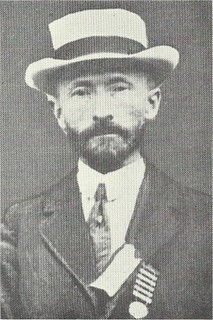 Benjamin G. Green (1860-1914), was born at Franklin Township, Mercer County, Ohio on March 16, 1860, son of Thomas Green (1832-1919), and
Sarah Jane Preston (1836-1926), both natives of Ohio. In his early youth his family moved to Piqua, Ohio. After completing his public school studies,
in 1878, he entered the newly chartered (1849) private school organized by the Church of United Brethren in Christ outside Columbus founded by Philip
William Otterbein, for whom the school was named, "The Otterbein University of Ohio", Westerville, Ohio. He taught school part-time while
there. After graduation in 1882 he traveled throughout thirty states and territories in America until 1886. He began coin collecting as a child and
before leaving Otterbein already amassed a fairly large collection of coins and stamps.
Benjamin G. Green (1860-1914), was born at Franklin Township, Mercer County, Ohio on March 16, 1860, son of Thomas Green (1832-1919), and
Sarah Jane Preston (1836-1926), both natives of Ohio. In his early youth his family moved to Piqua, Ohio. After completing his public school studies,
in 1878, he entered the newly chartered (1849) private school organized by the Church of United Brethren in Christ outside Columbus founded by Philip
William Otterbein, for whom the school was named, "The Otterbein University of Ohio", Westerville, Ohio. He taught school part-time while
there. After graduation in 1882 he traveled throughout thirty states and territories in America until 1886. He began coin collecting as a child and
before leaving Otterbein already amassed a fairly large collection of coins and stamps.
His religious upbringing and mild manner as a salesman formed him as being one of the most affable and congenial numismatists in the first two decades of the twentieth century, though his life was cut short in 1914.
On December 25, 1888, he married Minnie E. Nutt (1866-post 1930), at Dayton, Ohio. They lived at Cincinnati and had a daughter named Mabel (1892-). Green worked for Edward and Theodore Pape and Emil Kugemann in the Cincinnati firm of Pape Bros. & Kugemann selling art moldings, picture frames, and mirrors.
In 1890, he left the firm of the Pape Brothers & Kugemann and moved to Chicago where he continued to work as a salesman...
On February 20, 1902, he held his first coin auction sale. He held these sales of coin collections on a commission basis in what he called mail auctions conducted at his home in Edgewater, a lakefront community on the North side of Chicago. In all he held eighty-three auctions with the final sale sold posthumously on January 23, 1914. The first eighteen sales from February 1902 to September 1905 were mail bid auction sales printed in 16mo (5-3/4" - 6-3/4" in height).
The early catalogues were composed much like the catalogues Green was used to selling picture frame moldings and prosthetic devices that were rather bland and nondescript treating the coins much like merchandise to be sold as retail. The later auctions were all public auctions conducted by veteran Chicago auctioneer Dan Long at Green's office in the Masonic Temple Building. The gross take on his first twenty sales was $40,000.
 Earliest ad for his book Numismatist's Reference Check Book in the July and in the August 1902 issues of Philatelic West, Vol.
XX, Nos. 1 and 2. The 1793 Liberty Cap Half Cent C-2 image used on all his corporate collateral was borrowed from Lyman Low's advertisements.
Courtesy Lupia numismatic Library, Special Collection, Philatelic West.
Earliest ad for his book Numismatist's Reference Check Book in the July and in the August 1902 issues of Philatelic West, Vol.
XX, Nos. 1 and 2. The 1793 Liberty Cap Half Cent C-2 image used on all his corporate collateral was borrowed from Lyman Low's advertisements.
Courtesy Lupia numismatic Library, Special Collection, Philatelic West.
The first edition was a flexible leather pocket edition with gilt edges, Numismatist's Reference and Check Book: Being A List of Coins Issued By The U. S. Mint And Branches, With Principal Varieties, Private Issues of Gold, Paper, Fractional Currency and Encased Postage Stamps, With Provisions For Checking and Recording The Pieces In A Collection. It was published in several editions, interleaved or not interleaved and in a cheaper binding. A few months after advertising in the Philatelic West he ran his first quarter page ad for the book in the December 1902 issue of The Numismatist and kept an ad running for several years.
On September 15, 1902 he opened his own office at the Masonic Temple... It was at the Masonic Temple that Green attracted several important collectors from the Chicago area that fall and winter, including Virgil Michael Brand, and about a year later they formed the Chicago Numismatic Society. In 1941 William G. Jerrems, Jr., the aged first president of the ANA wrote his reminiscences about meeting Ben Green in 1901 and their interest in forming a Chicago Society.
In 1904, he served as secretary and librarian of the Chicago Numismatic Society (CNS), which he help found... In the early years many meetings of the CNS were held in Ben Green's salesroom at the Masonic Temple.
During his attendance for his last three ANA Annual Conventions, i.e., from 1911 to 1913 he exhibited his collection of about one hundred varieties of encased postage stamps, which was appraised as the finest known. It included the rare Hunt & Nash of Irving House, New York, English Penny Red postage stamp in wide use 1864-1880.
In 1913, he was elected to the Board of Governors of the ANA by a vote of 381 in favor. That was pretty good considering Judson Brenner received 384 and Howard Rounds Newcomb 383. Ben Green was well liked and respected throughout his tenure in the field of numismatics.
He died on January 17, 1914 of typhoid pneumonia... He was buried on January 20, 1914, in the Rose Hill Cemetery.
To read the complete article, see:
GREEN, BENJAMIN G.
(https://sites.google.com/a/numismaticmall.com/www/numismaticmall-com/green-benjamin-g)

Archives International Auctions, Part XXXII
U.S., Chinese, Russian & Worldwide Banknotes,
Scripophily and Coins
April 11-13, 2016
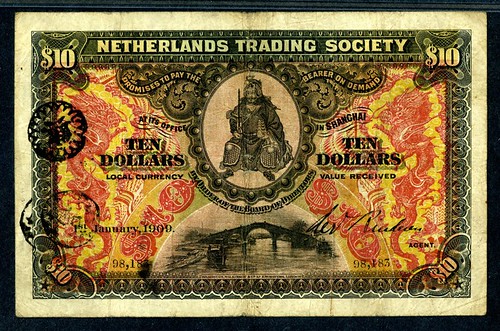
Click the links! Highlights include:
Lot 62: French Guiana. 5 New Francs 1961 Provincial Issue
Lot 85: Guadeloupe, 1 Noveau Franc on 100 Francs
Lot 104: Reserve Bank of India "Persian Gulf Note"
Lot 111: Government of Iraq 10 Dinars of King Faisal II
Lot 201: Philippine Islands Silver Certificate Unique Presentation Proof
Lot 255: Francis Spinner Letter, 1871.
Lot 479: Copper Printing Plate Engraved By William Kneass, Chief Engraver
Lot 499: U.S. Legal Tender Treasury Note, Unique Presentation Proof, $10, Series of 1890
Lot 1056: Lao 1948 Unlisted Color Trial Specimen Essay Banknote
Lot 1351: Vladikavkaz Railroad Company 1919 Interest Bearing Loan Note Rarity
Lot 2053: Bank of China, 1918 "Tsining / Shangtung" Issue Rarity
Lot 2258: Deutsch-Asiatische Bank, 1907 "Peking" Branch Rarity
Lot 2319: Peiyang Tientsin Bank, ND (1910) Tael Issue
Lot 2263: Netherlands Trading Society, 1909 Issued Banknote
View the Virtual Catalog
Download the Catalog in PDF format
ARCHIVES INTERNATIONAL AUCTIONS, LLC
1580 Lemoine Avenue, Suite #7
Fort Lee, NJ 07024
Phone: 201-944-4800
Email: info@archivesinternational.com
WWW.ARCHIVESINTERNATIONAL.COM
MARBLING ON CONTINENTAL CURRENCY
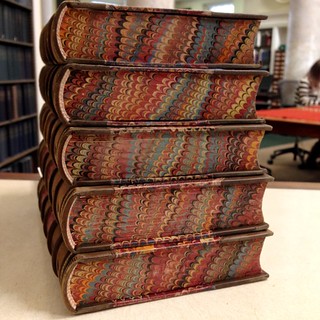 Every Monday, we show off a striking example of what are the most colorful features on historical book bindings: their marbled papers,
edges, and cloths. A recent photo of some rainbow-colored marbled edges received over 1,000 likes, placing it among the all-time most-liked posts on
the AAS feed.
Every Monday, we show off a striking example of what are the most colorful features on historical book bindings: their marbled papers,
edges, and cloths. A recent photo of some rainbow-colored marbled edges received over 1,000 likes, placing it among the all-time most-liked posts on
the AAS feed.
We consistently see our IG followers excited by the vivid hues and complex patterns of eighteenth- and nineteenth-century marbling; we even hear from the talented artists who are marbling papers today. People have posted countless comments noting the beauty of marbled papers and expressing enthusiasm for the #MarbledMonday feature.
But what has inspired our audience’s “marbled madness”—this fascination with an often-overlooked book art? A lot of it has to do with the aesthetic appeal of marbling, for sure. The intricate and varied patterns certainly catch the eye. But I think part of the attraction comes from the mystery of marbled papers, edges, and cloths. How could an artist, working in the eighteenth or nineteenth centuries, produce such vibrant and extraordinarily complicated designs, over and over again? These patterns have repeating elements that are remarkably precise and symmetrical: How was this done, we wonder, with old-fashioned tools? Even knowing the answer to this question, the art still seems somewhat like sorcery.
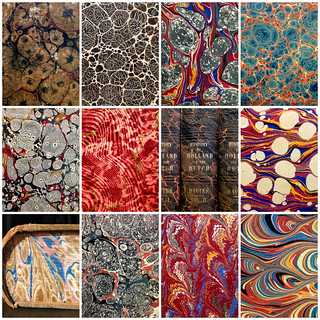 The art of marbling paper originated in Asia—with the Japanese art of suminagashi and the Turkish ebrû form—and eventually made its
way toward Europe around the time of the Renaissance. By the end of the seventeenth century, marbling was fairly well established in France and
Germany;
The art of marbling paper originated in Asia—with the Japanese art of suminagashi and the Turkish ebrû form—and eventually made its
way toward Europe around the time of the Renaissance. By the end of the seventeenth century, marbling was fairly well established in France and
Germany;
The earliest examples of American marbling can be traced to the 1760s, but the art form did not become an industry until the first half of the nineteenth century. For this reason, most of the marbled papers in the AAS collection are from the 1830s and beyond. There are a few notable exceptions, however, including pieces of Revolutionary currency that used marbling as an anti-counterfeiting measure—an innovation championed by none other than Ben Franklin.
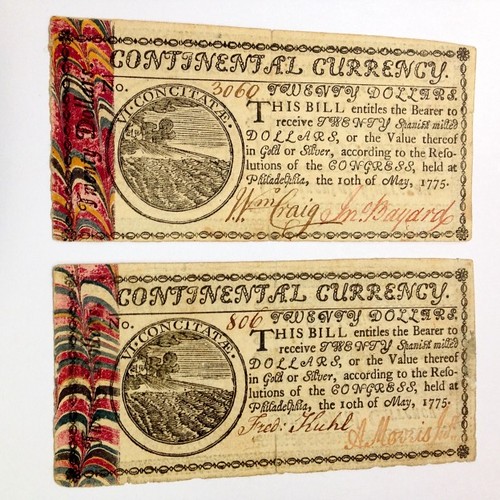
To read the complete article, see:
Marbled Madness!
(http://pastispresent.org/2016/good-sources/marbled-madness/)

SELECTIONS FROM HERITAGE NEWMAN INTERNET PART 1 SALE
The Newman Internet 1 sale contains a number of rare, choice condition and attractive sheets that are not often encountered outside of significant collections. Many are quite undervalued. Obsolete uncut sheets place an issuer’s designs within a superior context that showcases their artistic merits and provides invaluable opportunity for study.
Bank of the District of Columbia Sheet
The Bank of the District of Columbia sheet contains two denominations, $5 and $10, which are obtainable as individual notes and even as
proofs. However, few uncut sheets are known and the Newman example is choice and vibrant.
To read the complete lot description, see:
Washington, DC - Bank of the District of Columbia Uncut Sheet of $5-$5-$5-$10
(http://currency.ha.com/itm/obsolete-banknotes/washington-dc-bank-of-the-district-of-columbia-uncut-sheet-of-5-5-5-10-1858-dc-215-g8a-g8a-g8a-g10a-remainder-pcgs/a/241618-86462.s?ic4=GalleryView-ShortDescription-071515)
Dixon Hotel Company Sheet
The Dixon Hotel Company, Illinois sheet has an unusual denomination array of $2-$3-$5-$5; three vignettes of Spanish 8 Reale coins are on
the $3 denomination.
To read the complete lot description, see:
Dixon, IL - Dixon Hotel Co. Uncut Sheet of $2-$3-$5-$5
(http://currency.ha.com/itm/obsolete-banknotes/dixon-il-dixon-hotel-co-uncut-sheet-of-2-3-5-5-18-remainder-pcgs-choice-about-new-55/a/241618-86571.s?ic4=ListView-ShortDescription)
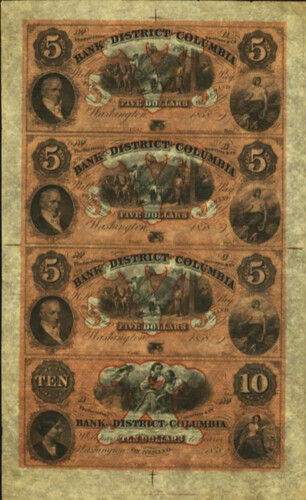
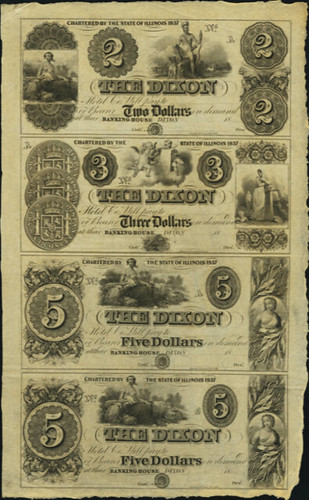
New Baltimore, Ohio Sheet
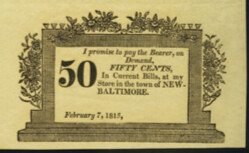 A New Baltimore, Ohio private store issuer created an interestingly styled sheet with eight denominations, including odd ones like 6 and 9
cents. The 50 cents note at the lower right has a “tombstone” or “mausoleum” design that is uncommon.
A New Baltimore, Ohio private store issuer created an interestingly styled sheet with eight denominations, including odd ones like 6 and 9
cents. The 50 cents note at the lower right has a “tombstone” or “mausoleum” design that is uncommon.
To read the complete lot description, see:
New-Baltimore, OH - Private Issuer "at my Store" Uncut Sheet 1 Cent-2 Cents-3 Cents-6 Cents/9 Cents-12-1/2 Cents-25 Cents-50
(http://currency.ha.com/itm/obsolete-banknotes/new-baltimore-oh-private-issuer-at-my-store-uncut-sheet-1-cent-2-cents-3-cents-6-cents-9-cents-12-1-2-cents-25-cents-50-c/a/241618-86992.s?ic4=GalleryView-Thumbnail-071515)
Corporation of Richmond Uncut Sheet
Thousands of different Virginia Obsolete currency notes are known, with most being from the tumultuous Civil War era. Corporation of
Richmond $1 notes with Spanish dollar reverses are not rare. However, the Newman uncut sheet of seven notes is not only rare but has two
perpendicular impressions at the left: another very unusual arrangement of denominations.
To read the complete lot description, see:
Richmond, VA - Corporation of Richmond Uncut Sheet of $1-$1/$1-$1-$1-$1-$1
(http://currency.ha.com/itm/obsolete-banknotes/richmond-va-corporation-of-richmond-uncut-sheet-of-1-1-1-1-1-1-1-april-19-1861-jones-andamp-littlefield-tr05-21-7-rem/a/241618-87194.s?ic4=ListView-ShortDescription-071515)
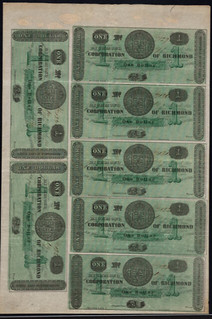
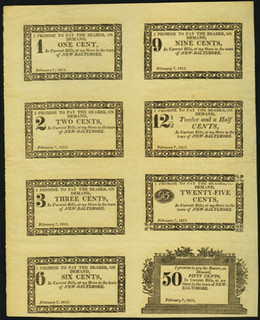
To bid, or access the downloadable catalog of Selections from The Eric P. Newman Collection Internet Part I, visit
HA.com/241618 .
THE BOOK BAZARRE
NEW YORK TIMES CALLS NUMISMATICS BIG MONEY BUSINESS
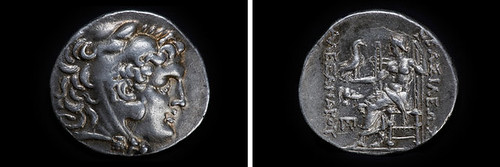
“Once coin collecting was a gentlemanly pursuit. Now it’s a big money business,” said Richard Bishop, senior specialist at Spink, one of London’s premier coin auction houses. “The rising prices are being dictated by the people who are buying the coins, because there are a hundred buyers to every seller, so the market is driving itself.”
Consider the Charles II five guinea piece, which Spink sold for 150,000 pounds, about $210,000, last May, tripling its top £50,000 sales estimate. Or the Lord St. Oswald 1794 silver dollar, which went for $4.99 million at the second D. Brent Pogue Collection sale in September, held by Stack’s Bowers Galleries and Sotheby’s in New York — more than 20 times its $242,000 price at its last auction, in 1985.
Indeed, the Luxury Investment Index in Knight Frank’s recent Wealth Report shows that coins have become the second-highest-performing luxury asset, behind cars, in the 12 months up to the fourth quarter of 2015. They appreciated 13 percent in that period, and achieved a sizable 92 percent growth during the preceding five years.
“The bull coin market stems from the global financial crash in 2008,” said Keith Heddle, managing director of Stanley Gibbons Investments. It provided the Wealth Report figures from its 2015 English Coin 200 Index, which captured the growth of 200 British coins valued at £5,000 to £225,000. “People were looking for an alternative way of diversifying their portfolio with alternative assets that are tangible and aren’t correlated to the stock market, where everything can drop at the same time,” he said. “Coins keep going up because they are not linked to the financial market.”
Gold prices also have pushed up the prices of gold coins, said Christopher Martin of CJ Martin Coins and chairman of the British Numismatic Trade Association. As he noted, “You can buy an ancient gold coin for double the bullion value, which has a greater intrinsic value and rarity because, of course, these coins are not being produced now and are limited in their availability.”
Emerging markets also have introduced new collectors. India is now one of the hottest markets, Mr. Martin said, as Indians “are beginning to be interested in their own coins and see the investment potential.”
Rare, flashy items like big gold coins are driving the top end of the market as they grab the headlines, said Mark Rasmussen, who deals in British coins ranging from the Anglo-Saxon era through the 1950s. And British coins have a worldwide appeal, he said, thanks to the British imperial history. “Anything that is top quality — near the condition when struck — goes for a high price, as collectors want the best examples that no one else has,” Mr. Rasmussen added.
The Internet is fueling the rising value of antique coins, too, allowing easy access to information like catalogs, price tracking and live bidding. John Millensted, head of coins at Bonhams in London, said, “People are less frightened of auctions than they used to be as we want people to buy and it’s easier to buy over the Internet because small items like coins don’t need huge shipping fees.” He noted that Bonhams’ coin auctions had attracted live online bids from as far afield as Australia and Canada.
The future of coins looks bright. As Mr. Heddle noted: “With a solid and constant 10-year rise of 232 percent, it’s tough to argue with the evidence.”
To read the complete article, see:
Antique Coins: 'A Big Money
Business' (www.nytimes.com/2016/04/05/fashion/antique-coins-a-big-money-business.html?_r=0)

FRAMING THE LATE ANTIQUE AND EARLY MEDIEVAL ECONOMY
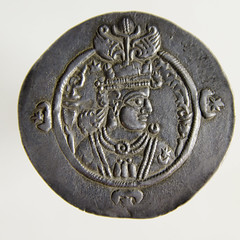
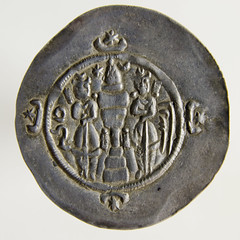
After over two years of work, FLAME (Framing the Late Antique and early Medieval Economy), a digital humanities project with twenty five participants and staff from the United States and Europe, is ready to conclude its first stage. In an upcoming conference (April 29-30), it will share the results of its participants’ research on the economy of Western Afro-Eurasia during the periods of Late Antiquity and the early Middle Ages, a tumultuous era that included the Fall of the Roman Empire, the Origin of Europe, and the Rise of Islam. FLAME brings together an unprecedented amount of data about ancient coins, as its first stage covers all minting activity between Ireland and Iran over four centuries and reveals long-term trends for the first time. For each of the six hundred or so mints in the FLAME area of interest, its online database will provide information about the minting of sixty denominations and thousands of issues, all at an annual level of resolution when possible. FLAME’s modular design also allows for easy future chronological and spatial expansion.
The upcoming conference will bring FLAME’s members to Princeton, together with a group of experts on the ancient economy – Florin Curta (University of Florida), Richard Hobbs (The British Museum), Stefan Heidemann (University of Hamburg), Marek Jankowiak (Oxford University), Jonathan Jarrett (University of Leeds), Cécile Morrisson (Collège de France), Vivien Prigent (Centre d'Histoire et Civilisation de Byzance, Orient et Méditerranée) and Peter Sarris (Cambridge University). The conference will be accompanied by a special exhibit of relevant coins from the Princeton University Numismatic Collection.
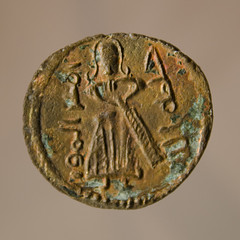
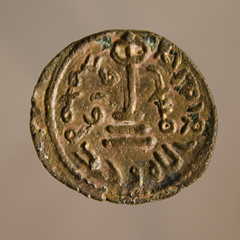
The conference on the grounds of Princeton University is open to the public; free advance registration (including lunch on April 30) and information may be had from the program's director, Lee Mordechai: lmordech@princeton.edu.
FLAME was conceived in Princeton, building upon the university’s strengths in the fields of Late Antiquity and early medieval history. Its chair, Alan Stahl, is Princeton’s numismatist, while its director and manager, Lee Mordechai, is a graduate student in the History Department.
Princeton faculty members John Haldon and Helmut Reimitz, six graduate students, and four undergraduates have served as the project’s core, working alongside faculty members, post-docs and graduate students from other institutions in collecting and analyzing large amounts of data on coin production and circulation with the aid of a unique mapping application developed for
At the conference, the project's website coinage.princeton.edu will go live with interactive maps showing the issues of all mints over the four centuries under study. After the conference, FLAME will move on to its more ambitious second phase, in which it will collect and analyze data about the find contexts of a million coins from thousands of publications from the region.
“The potential for aggregating so much data is enormous once we can start analyzing it. We don’t usually use the term ‘Big Data’ in ancient history since very little survives, but this is as close as it gets for us“, says Mordechai. Although FLAME’s main effort is geared towards scholarly use by non-numismatists, “it is extremely important for us to stay in touch with the interested public, and our site will cater to that demographic by providing them with introductory resources to share our findings about this crucial period”.
To visit the FLAME web site, see:
http://coinage.princeton.edu/
CONFERENCE AT SPAIN'S NATIONAL ARCHEOLOGICAL MUSEUM

Robert Hoge writes:
Readers might be interested in information regarding a significant upcoming numismatic conference in Madrid, at the National Archeological Museum of Spain. Sorry to be so late - I did not know about it earlier, alas!
Museum Collections Online. The example of the Numismatic
Friday, April 15
Conference, 9:30 to 19:00
Free and free assistance
Organizers:
- Ecole des hautes études et ibériques hispaniques (Casa de Velázquez, Madrid)
- National Archaeological Museum
- University of Valencia (Faculty of Geography and History)
- Prehistory Museum of Valencia
Collaboration: Bibliothèque nationale de France
In recent years there have been significant advances in the digitization and online publication of collections of museums as part of the institutional duty to make available to the public goods that make up the cultural heritage. Examples of Spanish museums and French gathered in this day serve as an example of the realities they face in this task and efforts to reconcile different document systems and national and international networks. Numismatics discipline has been particularly successful in this area, as it has generated exemplary initiatives in cooperation and adaptation to the philosophy Linked data.
On this day the theoretical and practical aspects that underlie different national and international projects will be presented, using these experiences to identify criteria, difficulties and resources needed to achieve efficient digitization of collections and putting them online.
For more information, see:
Colecciones museísticas en
línea. El ejemplo de la Numismática
(www.man.es/man/actividades/congresos-y-reuniones/20160415-colecciones-online.html)
THE BOOK BAZARRE
WHY HAVE SO MANY RELICS BEEN FOUND IN ISRAEL LATELY?
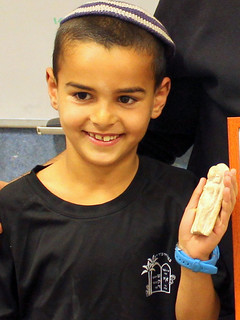 Last December, an Israeli boy was hiking with his family near Tel Beit Shemesh when he spotted the head of an Iron Age fertility goddess
figurine. The Israel Antiquities Authority expressed its gratitude to eight-year-old Itai Halperin with a certificate of good citizenship and an
invitation to him and his classmates to tour the IAA archive and participate in a real dig.
Last December, an Israeli boy was hiking with his family near Tel Beit Shemesh when he spotted the head of an Iron Age fertility goddess
figurine. The Israel Antiquities Authority expressed its gratitude to eight-year-old Itai Halperin with a certificate of good citizenship and an
invitation to him and his classmates to tour the IAA archive and participate in a real dig.
In January, seven-year-old Ori Greenhut stumbled across a 3,400-year-old statuette while scampering up an archaeological mound at Tel Rehov. He, too, got a certificate and a class presentation from IAA regional archeologists.
Accidental finds are not at all rare in Israel, where archeological treasures lurk in abundance underground and underwater.
“Israel is a very small country, intensively settled over thousands of years, and there are 37,000 registered archeological sites, so almost everywhere you have the potential to find things,” says Yardenna Alexandre, an IAA research and field archaeologist stationed in the Jezreel Valley.
But it seems the random discoveries have been coming fast and thick lately.
“There does seem to be a concentration of finding things over the past year,” Alexandre tells ISRAEL21c. “There may be several reasons aside from coincidence.”
She explains that when former politician Yisrael Hasson became chairman of the IAA in December 2014, he placed a priority on community involvement and educational programs to engage the public, especially schools, in archeological activities such as dig-for-a-day events.
“Antiquities and archeology is much more prominent in the media today, and that brings awareness,” says Alexandre.
“Hiking is very popular in Israel, and people may have been finding things and keeping them, whereas now they see that we encourage them to follow the law of turning them in.”
Rimon, finder of the rare coin of Trajan, tells ISRAEL21c that friends from the United States saw her story covered on TV news and talk shows. In addition to Israel, she granted interviews to reporters from Irish National Radio, the Canadian Broadcasting Company and the BBC and Huffington Post.
“A lot of people said I did the right thing by turning it in, while others said, ‘Why didn’t you just pocket it?’ I’m not the sort of person who would have sold something like this, but I’m sure there are tons of stuff people find and don’t turn in,” says Rimon, a native of Connecticut who moved to Kibbutz Kfar Blum in 1973.
She does wish she’d had time to show the coin to her family before giving it up. But everything happened very quickly, she relates.
To read the complete article, see:
Why do hikers in Israel keep stumbling upon
ancient relics? (www.israel21c.org/why-do-hikers-in-israel-keep-stumbling-upon-ancient-relics/)
CHINESE VILLAGERS OVERRUN ARCHAEOLOGICAL SITE
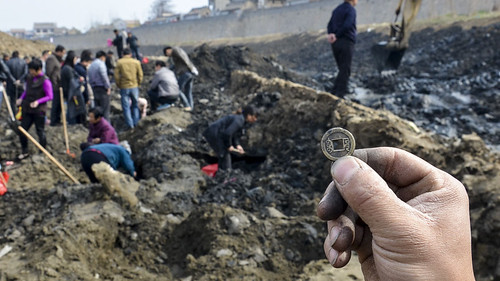
The villagers of Huaxian County in Henan, China, took "finders keepers" to a whole new level on Thursday when a 1,800-year-old UNESCO World Heritage site was drained for cleaning.
The Weihe River, which is part of the Beijing-Hangzhou Grand Canal, was a scene of a scavenger hunt when villagers flocked to the site to dig for treasure.
According to People's Daily, the river was drained for routine cleaning and when villagers caught wind of it, decided it was a once in a lifetime chance to help themselves to the treasures buried underground.
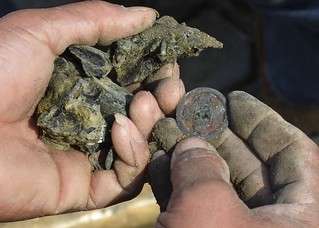 The Grand Canal stretches for 1,240 miles long, and was reportedly used as a navigational channel during the fifth century BC. The drained
section is one of the best-preserved parts of the canal, measuring five miles long and 180 feet wide.
The Grand Canal stretches for 1,240 miles long, and was reportedly used as a navigational channel during the fifth century BC. The drained
section is one of the best-preserved parts of the canal, measuring five miles long and 180 feet wide.
Local Chinese media outlets reported that many villagers who turned up at the site got lucky and took home gold ingots, ancient bronze coins and ceramic relics
To read the complete article, see:
Chinese villagers loot UNESCO World Heritage site
while it's being cleaned (http://mashable.com/2016/04/04/chinese-villagers-loot-grand-canal/#wd0jy09R6kqM)
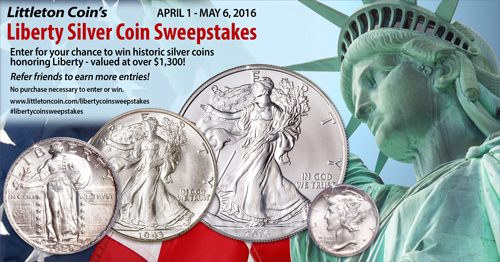
CHINESE COIN RECYCLER HOLDS OPEN HOUSE
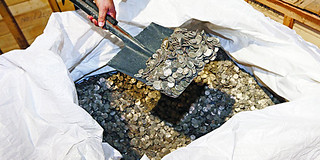 Recycling firm Wealthy Max Ltd is hoping to save face with a transparency program following a controversy that spelled massive fines and
civil proceedings for the company, which has links to China. The firm, which submitted tons of coins to the United States Mint’s Mutilated Coin
Redemption Program, has been embroiled in controversy for years after the U.S. government claimed that hundreds of thousands of coins tendered by
Wealthy Max were counterfeit.
Recycling firm Wealthy Max Ltd is hoping to save face with a transparency program following a controversy that spelled massive fines and
civil proceedings for the company, which has links to China. The firm, which submitted tons of coins to the United States Mint’s Mutilated Coin
Redemption Program, has been embroiled in controversy for years after the U.S. government claimed that hundreds of thousands of coins tendered by
Wealthy Max were counterfeit.
Suspicions grew among U.S. Customs and Border Protection officials in 2009 when they saw a sudden increase in shipments of damaged coins coming from China through the Port of Los Angeles. An investigation into some of these coins resulted in findings that the coins contained silicon and aluminum; neither element is found in authentic U.S. coins. Each of these coins appeared to have similar forces of mutilation, including mechanical deformation and chemically-induced corrosion. This led to a suspension of the United States Mint’s Mutilated Coin Redemption Program as officials investigated the alleged coin trafficking and abuses against the Mint’s century-old program.
On February 23, Wealthy Max officials invited members of the media and U.S. public officials from the Department of Homeland Security, United States Treasury, Department of Justice, and House Financial Services Subcommittee on Domestic Monetary Policy to inspect samples from 13 metric tons of mutilated coins. None of the invited U.S. officials attended the public audit at a facility in Foshan, China. However, several journalists showed up with cameras rolling and pens poised on pads as Wealthy Max stated their case before the press.
Media swarmed around piles of coins on the ground, sorted by date, that were taken as random samples from some of the 13 crates intended for shipment to the United States Mint. Each crate contains 1,000 kilograms of mutilated dimes and quarters, which were to be exchanged through the redemption program at the rate of about $20 per pound, the scrap metal value of the coins.
“We noticed 1975 wasn’t reflected on the coins and we asked ourselves ‘why is that?’” Gomez noted. He tied the findings of the company’s investigative procedures to a numismatically well-known fact that the U.S. Mint did not strike 1975-dated quarters due to the Bicentennial design program and 1776-1976 dual dating that began on quarters.
“It’s very interesting going into this history. As we conduct our research, you start to see trends,” he said. “That is actually what occurred in the U.S. when they were minting the coins, and that’s what we’re seeing in out compliance review,” he announced.
The findings may help Wealthy Max in the public eye at large. Still, some U.S. officials aren’t convinced that the mutilated coin scrap recycling industry in China entirely rings true. Assistant U.S. Attorney Lakshmi Srinivasan Herman compared the number of cars shipped to China to the amount of U.S. coins coming in from the Asian nation.
According to his complaint file, Herman wrote “There would have to be approximately $900 in coins in every vehicle ever exported to China as scrap metal in order to account for the total amount of waste coins imported from China for redemption.” He also expressed doubts about the number of half dollars shipped in as scrap from China. “Interestingly, United States Mint personnel also believe that more half dollars have been redeemed by China-sourced vendors in the last 10 years than the United States Mint ever manufactured in its history.”
To read the complete article, see:
Wealthy Max Opens Up to Redeem Name
(www.coinweek.com/people-in-the-news/crime-and-fraud/wealthy-max-opens-redeem-name/)
CANADIAN COMMUNION TOKEN COLLECTION OFFERED
Bob Merchant writes:
My collection of Canadian communion tokens is being auctioned at the Toronto Coin Expo, 21-22 April 2016, by Geoffrey Bell Auctions.
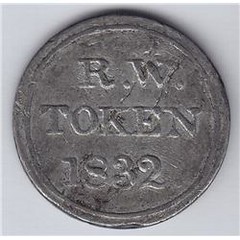
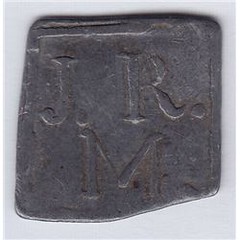
The Bob Merchant collection of Canadian communion tokens will be auctioned by Geoffrey Bell Auctions at the Toronto Coin Expo on April 21-22, 2016. There are hundreds of extremely rare communion tokens included, from many famous collectors of the past. The communion tokens are in lots 323-to-493. To view the auction catalog and to place bids, go to the following web site, and click on the catalog cover. You can also order a printed copy of the catalog from the auction house if desired.
http://auctions.gbellauctions.com/Toronto-Coin-Expo-Spring-Sale-2016_a26881?m=all

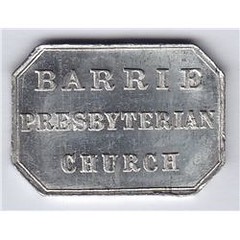
To read the complete article, see:
Communion Token Auction Announcement
(http://communiontokens.blogspot.com/2016/04/communion-token-auction-announcement.html)

U.S. MARINE GERMAN SHEPHERD AWARDED DICKEN MEDAL
 A military dog has been awarded the animal equivalent of the Victoria Cross, after losing a leg while sniffing out a roadside bomb.
A military dog has been awarded the animal equivalent of the Victoria Cross, after losing a leg while sniffing out a roadside bomb.
Lucca, a 12-year-old German Shepherd, served in the US Marine Corps for six years, taking part in more than 400 missions in Iraq and Afghanistan.
Her efforts to protect the lives of troops by sniffing out munitions led to her being given the Dickin Medal, awarded by the British animal charity, the PDSA.
It is the highest award for animals serving in military conflict and Lucca is the 67th animal to be honoured in this way.
Lucca, who is the first US Marine Corps dog to receive the medal, helped ensure there were no human casualties during any of the patrols she took part in.
The 12-year-old was retired in 2012, after she lost her leg and suffered chest burns while discovering a home-made bomb in Afghanistan.
Her owner, Gunnery Sergeant Chris Willingham, who travelled to London with his pet to accept the medal, said "Lucca is very intelligent, loyal and had an amazing drive for work as a search dog.
"She is the only reason I made it home to my family and I am fortunate to have served with her. Today, I do my best to keep her spoiled in her well-deserved retirement."
To read the complete article, see:
Military
dog who lost leg in Afghanistan awarded animals' Victoria Cross
(www.independent.co.uk/news/uk/home-news/dog-military-award-german-shepherd-victoria-cross-lose-leg-afghanistan-war-a6969851.html)
MORE ON THE OTTOMAN COIN EMBOSSED POSTCARD
Regarding the Ottoman coin embossed postcard discussed last week, David Gladfelter writes:
Thanks to Nureddin Gürpinar for the image of his Ottoman coin card. The coin on it looks like a 5 piastre piece but it's not the same variety as the one on the H.S.M. Ottoman era card shown here.
From the initials on the back, he identified the maker of his card as Brüder Kohn of Vienna (B.K. (space) W.I.). The W.I. must stand for Wien, district I. Haven't seen that imprint before. H.S.M. stands for Hugo Semmler, Magdeburg.
As you see, the Semmler card was sent from Constantinople-Galata Francaise on 1 December 1909, with a 10 centimes French Levant postage stamp, to Paris where it was received on 4 December 1909. (In those days, postmarks were stamped at the receiving post office as well as the sending one.) On the back is the sender's ink stamp with an ID that translates as "son of the Marshal Hairi Pacha." Don't know what a "major détat-major" is – perhaps a French diplomat? There's also an ink stamp in Arabic – can one of our readers translate it?
Love these coin cards, especially those that were postally used.

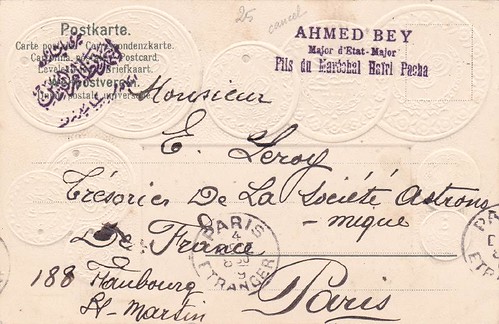
To read the earlier E-Sylum article, see:
AN OTTOMAN COIN EMBOSSED POSTCARD
(www.coinbooks.org/esylum_v19n14a30.html)
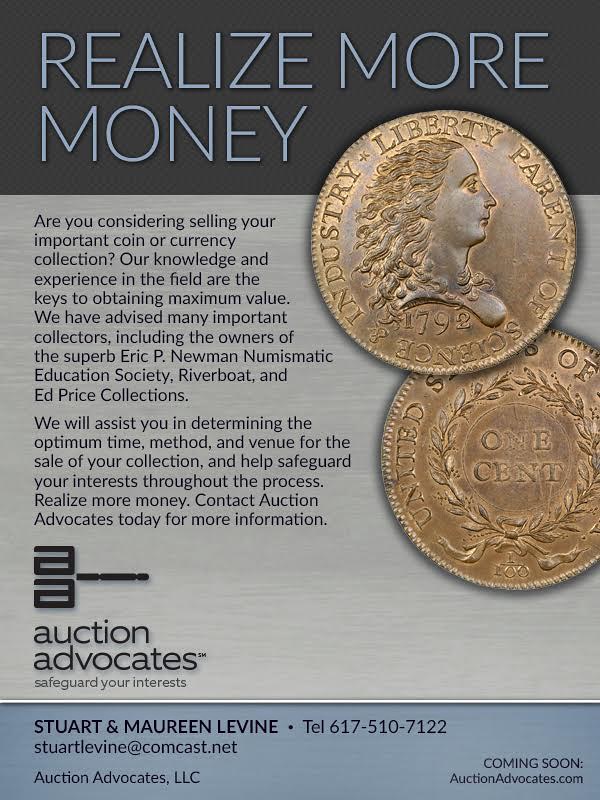
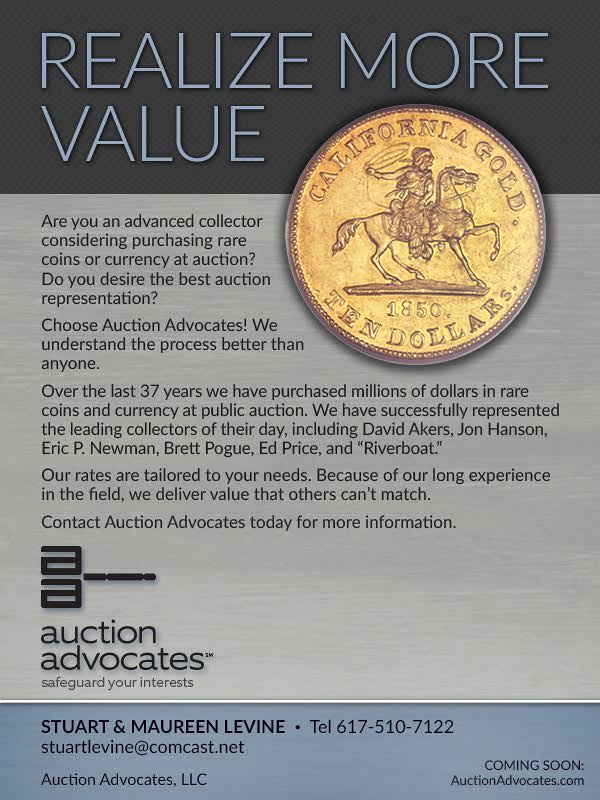
ACTION URGED ON APOLLO 11 COMMEMORATIVE COINS
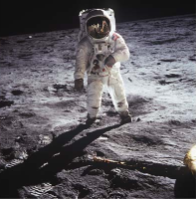 Last year Rep. Bill Posey (R- FL) introduced a bill, H.R. 2726, calling for the issuance in 2019 of a series of four coins honoring the
50th anniversary of the Apollo 11 landing on the moon, one of the greatest achievements of our country and of mankind. The coins include the usual
three-coin set of a silver dollar, clad half dollar, and $5 gold coin plus a first for the modern commemorative program, a proof 5-ounce silver coin
struck in the concave/convex shape used for the 2014 Baseball Hall of Fame coins.
Last year Rep. Bill Posey (R- FL) introduced a bill, H.R. 2726, calling for the issuance in 2019 of a series of four coins honoring the
50th anniversary of the Apollo 11 landing on the moon, one of the greatest achievements of our country and of mankind. The coins include the usual
three-coin set of a silver dollar, clad half dollar, and $5 gold coin plus a first for the modern commemorative program, a proof 5-ounce silver coin
struck in the concave/convex shape used for the 2014 Baseball Hall of Fame coins.
Last June Steve Roach explained in Coin World what this proposed coin program would include.
This program was first recommended in 2014 during a meeting of the Citizens Coinage Advisory Committee, when Mike Olson made a motion for it that received a unanimous vote, and the proposal again received a unanimous vote in 2015.
Since his term on the CCAC ended in 2014, Mr. Olson, an Iowa banker and former Army National Guard Lt. Colonel, has been working to promote this program, including meeting with members of congress from states that participated in the massive effort to land on the moon such as Florida, Texas, California, and Alabama. He was last on Capitol Hill a couple weeks ago.
To date H.R. 2726 has 63 co-sponsors, but it needs 290 to move the legislation forward. So far most of those who have signed onto the bill come from the same states mentioned above. In addition, a companion Senate bill has not yet been introduced.
If the bill does not pass both houses by the end of the year, it will expire, and those who care about this program will have to start all over again.
That is why time is really of the essence and why any collectors that want to see these coins issued should do what Mr. Olson recommended.
If collectors want to see this happen, they need to act NOW, and get their friends and neighbors engaged. It is very time intensive to get a commemorative coin proposal to this point and if this does not get passed by both houses before the end of the session this year, we will have to start over. We only have one chance in our lifetimes to honor the Apollo 11 lunar landing on a significant anniversary and we owe it to the astronauts and the people who made it possible to complete this mission.
Here is what coin collectors can do to make a difference and win the support of their members of Congress.
To read the complete article, see:
ACT NOW TO MAKE APOLLO 11 COINS A REALITY
(www.coinworld.com/voices/louis-golino/2016/04/act_now_to_make_apol.html)
STAMP MONEY OUT OF POLITICS OVERSTAMP
Rich Bottles writes:
I saw this story on Drudge Report. Apparently Ben & Jerry's cofounder is stamping cash with political messages.
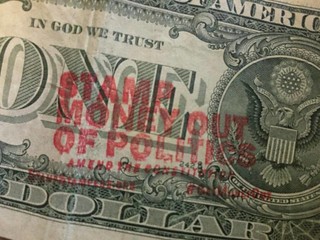 Ice cream maven Ben Cohen has moved on from Cherry Garcia and Imagine Whirled Peace to Stamp Money Out of Politics.
Ice cream maven Ben Cohen has moved on from Cherry Garcia and Imagine Whirled Peace to Stamp Money Out of Politics.
The Ben of Ben & Jerry’s Ice Cream says money is corrupting politics and practically everything else, from health care and student loans to energy and environmental policy. He passionately delivers a message to get money out of politics.
But Cohen may have a problem with the paper his message is printed on.
It’s money. U.S. money. Ones, fives, what have you. Some of the bills carrying Cohen’s message have shown up in the Kansas City area.
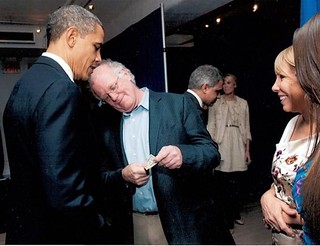 Cohen stamps his message on money and then hands it out to the likes of President Barack Obama, Rep. Nancy Pelosi, Sen. Bernie Sanders and
other notable public figures. Often a snapshot of the stamped-money handoff shows up online.
Cohen stamps his message on money and then hands it out to the likes of President Barack Obama, Rep. Nancy Pelosi, Sen. Bernie Sanders and
other notable public figures. Often a snapshot of the stamped-money handoff shows up online.
“The reason why we have so much money in politics is because the Supreme Court ruled that money is free speech,” Cohen said in an interview. “We’re going to make our money scream.”
Cohen figures he has stamped tens of thousands of bills in the last four years. And he’s gotten tens of thousands of others to stamp their money with the same messages, according to StampStampede.org, a Cohen-led website that sells the stamps, ink, T-shirts and other items.
The stamps say “NOT 2 B USED 4 BRIBING POLITICIANS,” “STAMP MONEY OUT OF POLITICS,” “CORPORATIONS ARE NOT PEOPLE,” “NOT TO BE USED FOR BUYING ELECTIONS” and similar phrases.
StampStampede.org also goes to great lengths to assure its customers that stamping money is legal.
“No, it’s not,” said Charles Green, the special agent in charge of the Secret Service field office in Kansas City. “We see it as a violation of the law.”
Cohen fires back that his stamping is legal. It’s political speech, protected speech, an exercise in First Amendment rights. And if the Secret Service wants to put a stop to it, Cohen said he’s ready to fight.
To read the earlier E-Sylum article, see:
STAMPSTAMPEDE CAMPAIGN TO MAKE ITS MARK ON DOLLAR BILLS
(www.coinbooks.org/esylum_v15n41a29.html)
OVERSTAMPS AS FREE SPEECH
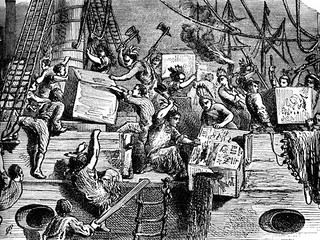 A goodly time ago, a mob of co-conspirators, some in disguise, led not by any pimply teenage rebel, but by an experienced 51-year-old
politically connected and sophisticated rabble-rouser, deliberately destroyed hugely valuable commercial property. They were in revolt against
established law of the land and against the legally constituted government authorities. The illegal, destructive acts of the mob were roundly
denounced by those authorities and by the segments of general society aligned with the norms of “law and order.” The conventionally minded were
unanimous in demanding the harshest retribution and punishment for the perpetrators. Some even accused them of treason.
A goodly time ago, a mob of co-conspirators, some in disguise, led not by any pimply teenage rebel, but by an experienced 51-year-old
politically connected and sophisticated rabble-rouser, deliberately destroyed hugely valuable commercial property. They were in revolt against
established law of the land and against the legally constituted government authorities. The illegal, destructive acts of the mob were roundly
denounced by those authorities and by the segments of general society aligned with the norms of “law and order.” The conventionally minded were
unanimous in demanding the harshest retribution and punishment for the perpetrators. Some even accused them of treason.
Although no camera phones were present, supposed eye-witness depictions of the event were soon disseminated.
Samuel Adams and his cohorts executed the so-called “Boston Tea Party,” a revolutionary political demonstration. In the ripeness of time it has come to be considered an iconic event in the establishment of the common people’s right to protest. It is hallowed as emblematic of the American love of liberty and rejection of unprincipled authoritarian domination, and an essential assertion of patriotism culminating in the birth of the independent United States of America.
Some two and a half centuries after the Boston Tea Party, we again see a number of rebellious political splinter groups and individuals declare themselves in revolt against the established law of the land and against the legally constituted government authorities. They destroy no property. Instead, some use the circulating money of the land as billboards on which to peacefully disseminate their demand that immensely affluent entities no longer be permitted to disproportionally influence the electoral process, an influence they consider to be undermining democracy.
And Bernie Sanders heads one of those splinter groups. He calls for “a political revolution.” In every campaign speech he blasts the “Corporations Are People” decision by the Supreme Court in the 2010 Citizens United ruling enabling a “corrupt electoral process” wherein “billionaires buy elections.” (All quotes are his words.) This was his credo long before Ben Cohen’s overstamped dollar bills came along. The slogans placed on money by StampStampede.org and others are indeed, in my view, as much protected political speech as the ads on public TV airtime.
Each federally issued paper money note is a unique copy of a bilateral written contract between the government and the bearer, and cannot be considered unencumbered property of the bearer.
But the legality of the use of paper money as a tool of advocacy remains an open question, and may need to be definitively determined in court. The language of the relevant statute* prohibits defacing the currency, along with other assorted no-no’s, “with intent to render it unfit to be reissued.” The legislation erects an imposing hurdle for prosecutors, though; they can’t get a conviction without proof of “intent.”
Overstamping the notes can only mean that the maker has the explicit intent of reissuing (defined as continuing to use) the notes. The most reasonable interpretation may be that the overriding pivotal consideration governing any alteration of current paper money is simply that, with intent, total incapacitation of the notes qua money or, of course, any attempt to deceive, is impermissible.
Charles Green, the Secret Service agent in Kansas City, who is quoted in the article as saying, “We see it as a violation of the law,” may find that is not the last word on the subject.
* 18 U.S.C. § 333 : US Code - Section 333: Mutilation of national bank obligations
Whoever mutilates, cuts, defaces, disfigures, or perforates, or unites or cements together, or does any other thing to any bank bill, draft, note, or other evidence of debt issued by any national banking association, or Federal Reserve bank, or the Federal Reserve System, with intent to render such bank bill, draft, note, or other evidence of debt unfit to be reissued, shall be fined under this title or imprisoned not more than six months, or both.
(June 25, 1948, ch. 645, 62 Stat. 700; Pub. L. 103–322, title XXXIII, § 330016(1)(B), Sept. 13, 1994, 108 Stat. 2146.)
QUEER MONEY OVERSTAMP
No one can say for sure how it started, but dollar bills with the words "gay money" or a pink triangle stamped on them are surfacing around the country, including in Baltimore.
The stamping is being done by gay men and women who want to prove a point. And the practice appears to be growing like the national deficit.
"The purpose is to show the amount of money that gay consumers spend," says Richard, who declined to give his last name.
Richard doesn't want his full identity known -- not because he is gay, but because it is illegal to deface money.
"What I do is, I get my paycheck and when I cash it I take about $20 in one dollar bills and stamp those," says the 27-year-old Baltimorean. Richard stamps both the pink triangle and the words "gay money" on his dollar bills and knows others who do the same.
To read the complete articles, see:
'Gay money': The
currency of change? (http://articles.baltimoresun.com/1993-06-22/features/1993173190_1_gay-money-gay-and-lesbian-words-gay)

The campaign (i believe i read somewhere) started in San Francisco in the early/mid 1970’s. It was also the same time that a new printing technology was released to the market: the self-inking rubber stamp. without this humble new printing technology advancement, gay folks might still all be living in closets in this society.
i’m always fascinated by the ways that the human mind will adapt new technology to surprising tasks. It’s the source of most of the innovation in america since WW2 – adaptation and appropriation. We take an idea that emerged as a solution somewhere else in our culture and then simply take it and adapt it to a new task. That is the basic precept of post modernism. It’s not about inventing the ‘new’, but taking the existing and adapting it inventively. From this viewpoint, the queer money campaign is probably the first truly great social postmodernist political event.
Before too long, starting on the west coast and then eventually literally flooding the nation, bills rubber stamped ‘QUEER $$$’ appeared everywhere. By the late 70’s, you literally couldn’t find a handfull of money in your pocket that didn’t have this on at least one bill. It was omnipresent and it was kinda impressive.
To read the complete article, see:
QUEER MONEY $$$ AND A BRILLIANTLY
NORMATIVE IDEA (http://madamepickwickartblog.com/2011/04/queer-money-and-a-brilliantly-normative-idea/)
To read the complete article, see:
Ben & Jerry’s co-founder tempts Secret Service by
stamping messages on money (www.mcclatchydc.com/news/politics-government/article70414582.html)
THE BOOK BAZARRE
THE “LADY LAVERY” IRISH FREE STATE £50 BANKNOTE
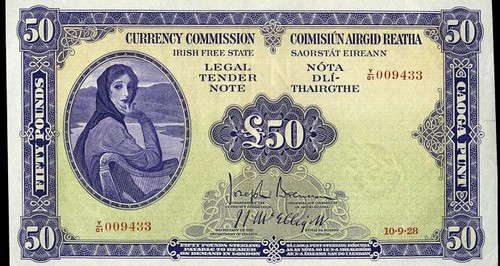
An old “Lady Lavery” Irish Free State £50 banknote is expected to sell for up to 360 times its face value at auction in London on Monday.
Auctioneers Dix Noonan Webb’s specialist auction of paper money at the saleroom in Bolton Street, central London, includes “a rare 1928 Irish £50 note – one of only about 20 surviving examples available to collectors” which is expected to sell for up to £18,000 (€22,800).
Following the establishment of the Irish Free State in 1922, a Currency Commission was set up to advise the government on a monetary system for the new country.
The first series of banknotes for the Irish Free State was issued on September 10th, 1928.
They were issued in denominations of 10 shillings, £1, £5, £10, £20, £50, and £100, in the colours orange, green brown, blue, red, mauve and olive respectively.
The renowned Irish portrait painter Sir John Lavery was commissioned to produce an image of the female personification of Ireland for the banknotes and he used his wife, Lady Hazel Lavery, as his model. Her image appeared on the front of all the notes.
The reverse of each note featured an image of a stone river mask of a god representing one of the major Irish rivers based on the sculptures on the facade of Dublin’s Custom House.
The mask used on the reverse of the £50 note was that representing the Shannon. The notes were much loved and remained in circulation until the 1970s when new designs were introduced and Lady Lavery was replaced – on the £50 note by Turlough O’Carolan, the blind harpist and composer.
Lady Lavery’s image survived as a paper watermark – until she was banished forever with the introduction of new euro notes in 2002. The auctioneers say the 1928 Lady Lavery £50 note was “the most difficult of the series to find”.
Although some 10,000 of the £50 notes were printed only “approximately 20 are thought to have survived outside public collections” and the example to be sold “is in unusually good condition.
To read the complete article, see:
‘Lady Lavery’ Irish Free State £50 banknote worth a fortune
(www.irishtimes.com/life-and-style/homes-and-property/fine-art-antiques/lady-lavery-irish-free-state-50-banknote-worth-a-fortune-1.2601736)
CAMBODIANS BURN U.S. DOLLAR "HELL MONEY"
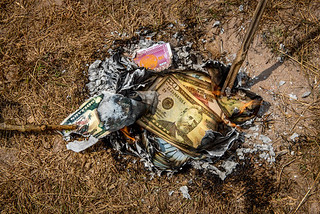 One recent morning, Suon Sokhum, a colonel in the Cambodian Army, was shopping for gifts for his ancestors.
One recent morning, Suon Sokhum, a colonel in the Cambodian Army, was shopping for gifts for his ancestors.
Qingming, the annual festival to honor the dead, was coming up, and throughout the Chinese diaspora in Southeast Asia, people burn offerings to provide for their ancestors in the spirit world.
At a stall on the southern fringe of one of the city’s oldest markets, he browsed votive wares ranging from traditional red candles to glossy Lexus sport utility vehicles made of cardboard, finally settling on several sets of paper clothing and four neat stacks of replica $100 bills.
Col. Suon Sokhum paid for the presents in local currency, the riel, but said he would never consider offering riel to his ancestors. They, like ghosts and spirits throughout Cambodia, prefer dollars.
“It’s too small,” he said of the riel, which trades around 4,000 to a dollar. “I want a bigger note. If we give the big note, the ancestors can get a lot of money. If we give them small money, they will need so many notes that they’ll go crazy carrying them around.”
So on the holiday this week, along with cardboard cars, cellphones and other supplies their ancestors might need, Cambodians burned millions of fake United States dollars, much to the chagrin of the government.
The government has been trying to wean the economy off dollars, which are used here in tandem with the riel. Riel are usually used for small purchases, and dollars for most other things.
And the biggest holdout may be the spirit world, where the dollar is king.
“It’s an indication that no one, even the dead, apparently, thinks the riel is regarded in high esteem,” said Sophal Ear, an associate professor of diplomacy and world affairs at Occidental College, in Los Angeles, who has studied dollarization in Cambodia.
He said he had vivid memories of burning spirit money with his family as a child. “It’s a kind of wire transfer to the afterworld,” he said.
At the Kambol graveyard on the outskirts of Phnom Penh last weekend, the air smelled of smoke and roasted pigs, and charred bits of dollars and the occasional euro littered the grass.
“The dollar is valuable, so that’s why we pay in U.S. currency,” said Heng Panhawat, a clerk for a law firm, as he and his children tossed stacks of American currency, a fake jade bracelet and a paper iPhone 5 into the flames.
“When I was young, we just paid respect to ancestors with gold paper and did not burn paper money, but now society has changed,” he said. “When something is valuable on the market, we buy it and burn it for the ancestors.”
Pablo adds:
Why not simply burn a no-limit credit card ?
To read the complete article, see:
In Cambodia, the Ghosts Prefer
Dollars (www.nytimes.com/2016/04/09/world/asia/cambodia-qingming-festival-ghosts-prefer-dollars.html)

VIETNAM PLANS TO ISSUE COMMEMORATIVE BANKNOTE
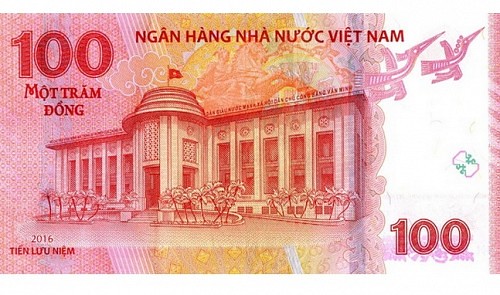
The plan to issue a new banknote to commemorate the 65th anniversary of the State Bank of Vietnam (SBV) is mostly funded by foreign sponsors, the central bank revealed on Tuesday.
Four leading foreign banknote manufacturers from Germany, Switzerland, and France will cover expenses for the commemorative 100-dong banknote slated for issuing in May, SBV vice governor Dao Minh Tu told Tuoi Tre (Youth) newspaper.
The foreign sponsors will cover costs for rag papers, ink, and technology used in printing the bill, whereas Vietnam only carries out the actual printing process, which costs very little, Tu said.
The SBV said on Monday it will release the souvenir banknote, which will not be eligible for circulation, on May 6 in commemoration of its 65th anniversary (1951-2016).
Despite having no circulation value, the souvenir banknote will have to go through rigorous printing and issuing procedures like valid banknotes, Tu noted.
Tu added that SBV also had to submit the plan to the Prime Minister for approval before hand, but refused to disclose the printing expense as well as the amount of banknotes to be issued.
“Printing and issuing souvenir banknotes is a common practice in many countries,” he said.
“The profit from selling these commemorative banknotes will contribute to the bank’s revenue in accordance with current laws.”
The SBV revealed earlier that the souvenir banknote is available for purchase as keepsake at VND20,000-25,000 apiece.
To read the complete article, see:
Vietnam’s plan to issue
commemorative banknote is foreign-funded: Cbank
(http://tuoitrenews.vn/business/34132/vietnams-plan-to-issue-commemorative-banknote-is-foreignfunded-cbank)
WOMEN USING BANKNOTES TO MEASURE THEIR SKINNINESS
 A new bizarre beauty trend which sees women trying to wrap a banknote around their wrist has taken Chinese social media by storm.
A new bizarre beauty trend which sees women trying to wrap a banknote around their wrist has taken Chinese social media by storm.
In this so-called 'fitness' test, a participant is deemed to have skinny arms if the bill could wrap all the way around her wrists. Huanqiu, affiliated with the People's Daily Online reports.
The unusual test comes just weeks after the country went wild at the 'A4 waist' challenge, which saw women measuring their midriffs with the width of A4 paper, as well as the 'iPhone 6 leg'.
To take part in the challenge, all that is needed is a Chinese banknote which measures about six inches long and three inches wide and a smart phone.
According to the latest craze, if the banknote rolls around your wrist then you have the perfect body.
To read the complete article, see:
New social media challenge sees women trying to wrap banknotes around their wrists - to see if their arms are skinny enough
(www.dailymail.co.uk/news/peoplesdaily/article-3522993/New-social-media-challenge-sees-women-trying-wrap-banknotes-wrists-arms-skinny-enough.html)
AUSTRALIA ISSUES “CONVICT LOVE TOKENS” COINS
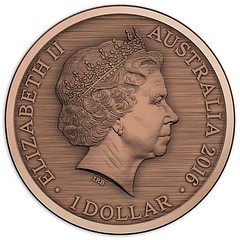
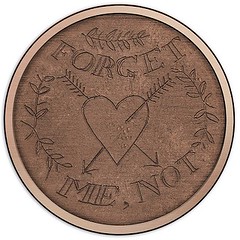
The Royal Australian Mint has issued a series of coins recalling the “convict love tokens” of the 18th and 19th centuries, which were given to families in England after loved ones were banished to Australia and elsewhere following criminal convictions.
The National Museum of Australia has the world’s largest collection of these pieces and provides the following overview of their purpose and context:
Smoothing and engraving a coin with a message of affection was one of the few ways a convict could leave a memento behind with loved ones in England before being transported. These small tokens are also known as ‘leaden hearts’. They record personal and emotional responses from convicts whose lives are more often represented by official government records.
The tokens often include the names of the convict and their loved one, the length of the convict’s sentence and popular phrases and rhymes of separation. They were frequently engraved around the time of conviction for a prisoner’s loved one or family. The tokens were engraved or stippled, which involves making marks with a series of small pin pricks. They were crafted by professionals and amateurs.”
The coins share a common obverse design, which features Ian Rank-Broadley’s portrait of Queen Elizabeth II, with the inscriptions ELIZABETH II, AUSTRALIA 2016, and 1 DOLLAR placed along the rim.
To read the complete article, see:
Australia Issues Historical “Convict Love
Tokens” Series (http://news.coinupdate.com/australia-issues-historical-convict-love-tokens-series/)
To read earlier E-Sylum articles, see:
CONVICT LOVE TOKENS? (www.coinbooks.org/esylum_v06n33a10.html)
CONVICT LOVE TOKEN BOOK AVAILABLE
(www.coinbooks.org/esylum_v06n37a04.html)
WHAT WILL WE DO (OR SAY) WITHOUT THE PENNY?
John Regitko of Toronto, Canada writes:
I am just getting caught up since I have not looked at my e-mails for the past six weeks. Imagine, six weeks without the internet and I survived. I also survived my right hip replacement (after having my left hip and right knee replaced previously – next year my surgeon is going to ask my wife what else doesn’t work as well as it used to and get that replaced also). I had some complications, including them adding three inches in height to my right leg to even it up with my left one, the result of my previous knee operation.
In a recent E-Sylum, an article wondered about the future of numismatics. I won’t make a prediction, but I did publish some changes that will have to come about in future (which I published in one of my “Eh-Bulletins” which was sent out to close to 3,000 people.
MY OPENING SHOT
Much has been written about the phasing out of the lowest denomination of currency we have in North America. What will happen when the
lowly cent/penny is discontinued? For one thing, we will have to revise some phrases and titles. For example:
- A nickel for your thoughts
- Nickel wise, euro foolish
- Nickels from Heaven
- A nickel saved is a nickel earned
- If you save nickels, the dollars will save themselves
- My two nickels worth
- Let’s play nickel-ante
- Spend a nickel
- You are like a bad nickel
- Nickel pincher
- Haven’t got a nickel to my name
- In for a nickel, in for a euro
- Pretty nickel
- Lucky nickel
Until hyper-inflation kicks in, “a buck stops here,” “a quick (or fast) buck,” “a fool and his money are soon parted,” “can you spare a dime,” “sound as a dollar,” “you look like a million dollars” and “million dollar baby” are safe, to coin a phrase. How about buck naked (Toonie naked?). I wonder if I will have more money than I know what to do with?
Until they discontinue money entirely, “cash cow,” “making money hand over fist,” “time is money,” “another day another dollar,” “bet your bottom dollar,” “blood money,” “broke the bank” “raking in the money,“ “not worth a plug nickel,” “dime a dozen” and “laugh all the way to the bank” are also safe. But then we might have to “buy something for a song.” Or use a “non-cash cow.” You won’t be able to “cash in your chips.” You won’t have “two nickels to rub together.” I wonder what a “king’s ransom” will consist of? Maybe you will be able to “lose your shirt” after all. Money won’t “burn a hole in your pocket,” or “buy you happiness.” I wonder what will grow on trees? There will be no money grubbing people around that are money hungry. We will have to find something else to be the root of all evil. And what will make the world go round? What will you put where your mouth is? What will you roll in if not the dough? What will you “sell out” with? What will you show if not the money? Maybe small potatoes? What will you stretch if not a dollar? What will you sweeten the pot with? You will have to be a tight wad with something else. I would buy into that.
You won’t be able to turn on a dime. What will time be if not money? That’s the $64,000 question! I just hope there will be no hell to pay. But it doesn’t matter, because money can’t buy you happiness, I am told. And you can bank on that. You might have to take wooden nickels whether people tell you to take them or not. And I’ll bet you even money on that (who is this guy named Even Stevens anyway?). Maybe the silver lining on every dark cloud will be worth something. Or fool’s gold. I wonder what I won’t have if I go to the poor house with only my heart of gold. And highway robbery has pretty well stopped. I’ll bet dollars to a donut on that.
The phrase “drop a dime” has been outdated for a long time. “Drop a quarter” doesn’t work any more either, with “drop six bits” the norm these days, thanks to Ma Bell.
Maybe we will revert back to the gold standard and actually use gold. You know, the stuff that is in them thar hills. That idea might be worth its weight in gold. Then we will have actual gold diggers. By the same token, there is no such thing as a free lunch. I just hope it won’t be too rich for my blood. I don’t want to up the ante too much. It might be the best thing since sliced bread. You can bet your bottom dollar on that. You might actually bring home the bacon. Or buy something for a song. You might want to buy the farm. Dirt cheap might take on a more meaningful meaning. I wonder what it would be that you need to be considered being filthy rich? Maybe the dirt on the farm you bought. Just don’t be a day late and a dollar short.
But one thing we can be sure of: the times they are a changing – especially the change in your pocket if they discontinue the cent.
To read the earlier E-Sylum article, see:
PREDICTING THE NUMISMATIC FUTURE (www.coinbooks.org/esylum_v19n04a14.html)
GIANT COIN MAKES STUFF LOOK SMALL
In 2011, the Norwegian design studio Skrekkøgl scuplted a massive 50-Euro-cent coin and shot it from above with a tilt-shift lens alongside numerous full-sized objects to make them seem to be cunning miniatures.
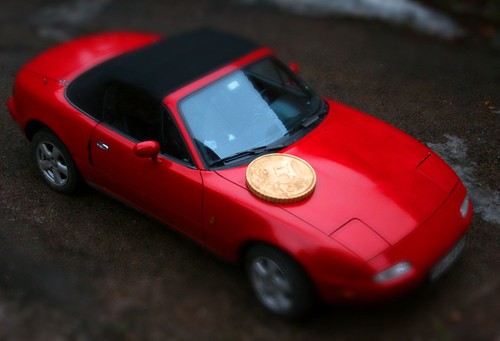
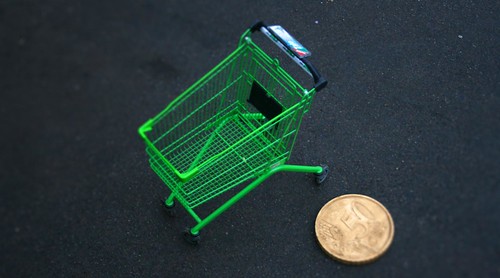
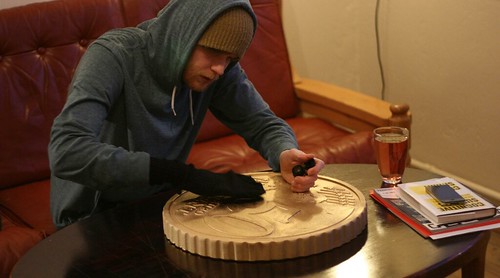
To read the complete articles, see:
Studio sculpts giant coin, photographs it alongside normal
objects to make them look tiny (http://boingboing.net/2016/04/03/studio-sculpts-giant-coin-pho.html)
50 ¢ (www.skrekkogle.com/50c.html)

